
- Jungle Safaris

a guide to jungle safaris in Africa
Jungle safaris offer the optimal safari experience for those who enjoy getting up close and personal with nature – experiencing both flora and fauna first-hand. There’s always the hope of something of interest lurking on the other side of tall grass or hanging in the branches above.
And African jungles, in particular, are world-renowned for their primates, offering the opportunity to see all sorts of African monkeys , and perhaps more excitingly chimpanzee and gorilla trekking experiences .
What exactly is a jungle?
Nearly everyone has an idea about how they’d define the biome, and most of them probably do have some correct information.
The best way to think of a jungle would be a densely forested area with tangled vegetation and underbrush in a tropical climate. Jungles are very similar to rainforests, but are drier than their relatives and don’t have as much skyscraping vegetation.
They are areas completely unhampered by humans and thus provide one of the most exhilarating opportunities to see jungle animals in their natural habitat. Read more about jungles .
Where are Africa’s jungles?
As you might imagine, jungle safaris can take you into the heart of some of Africa’s most exotic locales. The majority of Africa’s jungles are focused close to the center of the continent, between the Sahara and Kalahari deserts, but pockets of jungle can also be found in Uganda and Tanzania in East Africa.
As with most wildlife, jungle animals are dependent on nourishment from water to live. Because of the difficulty of spotting wildlife in dense jungles, the majority of jungle safaris focus on wildlife spotting from or around water sources. This usually means spending time close to one Africa’s rivers or the surroundings of one of the many great lakes dotting the Rift Valley which form part of the borders between the Democratic Republic of Congo and Uganda, Rwanda, Burundi, and Tanzania. The one significant exception here is when taking a jungle safari to enjoy an ape trekking experience where venturing deep into the jungle – and even up mountains or volcanos – is required.
Here’s our pick of the top national parks to experience a true jungle safari:
Parc National Des Volcans is a dense, wet jungle on the upper reaches of towering volcanos. Made famous by Dianne Fossey and her life’s work on the resident gorilla families.
Nyungwe National Park Dense, mountainous virgin forests with waterfalls, chimpanzees, and a host of smaller monkeys. There’s also a snazzy new jungle canopy walkway which gives a whole new take on the jungle safari.
Murchison Falls National Park has the Murchison Falls and Nile river running through thick forest and savanna with wildlife viewing not limited to the big five. A classic jungle safari whether you’re in a jeep or trekking.
Bwindi Impenetrable Forest National Park Steep mountain rain forest with wide altitude span offering the ultimate jungle safari with the chance of coming face to face with a gorilla.
Kibale Forest National Park is made up of lush tropical rain forest in an area of outstanding natural beauty and habituated chimpanzee families to enliven your jungle safari trek.
Gombe National Park
Mahale Mountains National Park
What to see on a jungle safari
There are all manner of jungle-dwelling animals in Africa – from the bongo to the African forest elephant. But probably the most alluring aspect of a jungle safari is the presence of our primate relatives. Monkeys, gorillas, and chimpanzees can all be seen in jungle environments in Uganda , Tanzania , Rwanda , and the Democratic Republic of the Congo.
Gorilla trekking on a jungle safari
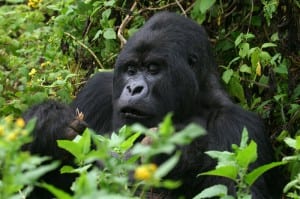
Spot mountain gorillas on your jungle safari
There’s no creature on the face of the earth that has piqued more human interest than our evolutionary ancestors, the gorilla. Gorilla trekking is the best opportunity to observe the majesty of our primate relatives up close and personal, and in their natural habitat.
With dwindling numbers and habitat, gorilla safaris where you’re virtually guaranteed a sighting of a habituated gorilla are limited to just three national parks in Uganda and Rwanda. Gorilla trekking in the Democratic Republic of Congo is possible, but an on/off affair, and not advised at this time due to security conditions in the country.
Tips for gorilla trekking
- A jungle environment tends to bring out even more bugs and flying insects than other types of safari , so be sure to have enough insect repellent.
- The trek to find gorillas can be a long and tiring one through dense rain forest, so ensure you’re well prepared – strong waterproof footwear and long sleeves and trousers are recommended to avoid scratches from plant life and the ever-present jungle ants.
- Garden gloves may sound silly but will prove useful when trekking through overgrown brambles and thorns.
- The hour that you get to spend with a gorilla family when you finally encounter them goes incredibly fast. Make sure you take time out of photographing them to simply watch and admire them.
- If you’re ill you won’t be allowed to trek to the gorillas, as illnesses can be shared. You’ll need to arrange a doctor’s note for a full permit refund in Uganda or a 50% permit refund in Rwanda.
- In order not to be viewed as a potential threat you should speak only very quietly when in the presence of a gorilla and don’t make any sudden movements.
- If a gorilla charges at you the advice is to crouch down in a submissive position until they calm down – never turn your back and run!
Best time to enjoy a jungle safari
If you’re heading to central Africa for a safari you should do so between December and March, during the dry season. The rainy season from May to September makes travel extremely difficult, with most dirt roads closed due to rain and mud. Flooding is common in the rainy season (particularly around rivers), and the risk of getting malaria is increased.
Jungle safari tips
Bloodborne illnesses are extremely common from mosquitos, flies, wasps, spiders, and other jungle insects. Companies that offer jungle safaris may request specific immunizations before your safari. Either way, you should seek professional medical advice and take proper medical precautions before you travel to Africa.
A jungle environment tends to bring out even more bugs and flying insects than other types of safari , so be sure to be well-stocked with insect repellent.
If you’re planning to do any walking in the jungle, long sleeves and trousers are recommended to avoid scratches from plant life. Read more on what to wear on safari .
Never travel alone in the jungle – always travel in groups and hire a guide.
Avoid using a flash on your camera if taking photos as it can ward off the wildlife. Want to know how to take the perfect wildlife photo ?
Jungle safari resources
Safari inspiration.
- Canoe Safaris
- Desert Safaris
- Family Safaris
- Fly In Safaris
- Gorilla Safaris
- Honeymoon Safaris
- Horseback Safaris
- Hot Air Balloon Safaris
- Luxury Safaris
- Night Safaris
- Photo Safaris
- Self Drive Safaris
- Walking Safaris
Safari guides by country
- Botswana safaris
- Kenya safaris
- Namibia safaris
Rwanda safaris
- South Africa safaris
- Tanzania safaris
- Uganda safaris
Zimbabwe safaris
African safari companies
Botswana safari companies
Kenya safari companies
Namibia safari companies
Rwanda safari companies
South Africa safari companies
Tanzania safari companies
Uganda safari companies
That’s our round-up of jungle safaris done. Any useful tips? Or any questions or additions you think we should make to the article? Let us know in the comments section below.
Top countries for safaris
Safari basics.
- Safari animals
- How to find the right safari company
- When to go on safari
- What to take on safari
- Safari clothing – what to wear
- Safari rules & etiquette
- Wildlife spotting tips
Most read articles
- All about the ‘big five’ animals
- Collective nouns for animals
- Safari movies to watch before you go
- The world’s fastest land animals
- Apex predators
- 10 Fascinating African tribes
- The biggest animals in the world
- 17 Epic hybrid animals
- The world’s ugliest animals
- Why are flamingos pink?
Africa’s best game reserves
- Chobe National Park, Botswana
- Etosha National Park, Namibia
- Kruger National Park, South Africa
- Masai Mara National Reserve, Kenya
- Moremi Game Reserve, Botswana
- Okavango Delta, Botswana
- Serengeti National Park, Tanzania
Session expired
Please log in again. The login page will open in a new tab. After logging in you can close it and return to this page.

Safari vs. Jungle — What's the Difference?
Difference Between Safari and Jungle
Table of contents, key differences, comparison chart, human interaction, ecological role, conservation, compare with definitions, common curiosities, how do safaris contribute to conservation, can safaris be found outside of africa, what defines a jungle, why are jungles important, are safaris always about hunting, what is a safari, can safaris be harmful to wildlife, how are jungles different from other forests, how do i prepare for a jungle expedition, why is jungle conservation important, what kind of wildlife can be seen on a safari, what is eco-tourism in relation to safaris, what challenges do jungles face, do people live in jungles, what activities are involved in a safari, share your discovery.

Author Spotlight
Popular Comparisons

Trending Comparisons

New Comparisons

Trending Terms

Protect Your Trip »
12 Top African Safari Tours
Cross this must-do activity off your bucket list.

Courtesy of Micato Safaris
Spot the big five on your safari adventure.
Safari tours in Africa are just as diverse as the continent itself, though these types of trips typically require a large sum of money. Whether you want to spend a few days gorilla trekking in Uganda or a couple weeks spotting the "big five" – lions, leopards, African elephants, rhinos and Cape buffalos – in South Africa, you'll find an array of tours to best suit your needs. To help you narrow down your options, U.S. News compiled a list of 12 can't-miss African safari tours. Read on to find your once-in-a-lifetime trip.
Note: Some of the African countries in this article may require travelers to get an entry visa and certain vaccinations in order to visit. Jump to the list of visa and vaccination requirements by country at the bottom of this page for more information.
&Beyond

Courtesy of &Beyond
Visitors who don't want to sacrifice creature comforts while on safari will appreciate &Beyond's offerings. During the tour operator's 10-day Kings of the Jungle safari – which starts at $11,340 per person – travelers will see breathtaking natural wonders like the Ngorongoro Crater and the Maasai Mara savanna. But the highlight of this journey is its four-night stay at Tanzania's Serengeti National Park . After watching animals like wildebeest and zebras partake in the great migration while also spotting lions, giraffes and more, vacationers retreat to high-end tents and lodges with private bathrooms.
[See more of Serengeti National Park: Things to Do | Hotels | When to Visit | Photos ]
Wilderness Safaris

Courtesy of Wilderness Safaris
For some of Africa's most jaw-dropping scenery, opt for the seven-night Namibian Adventure Safari tour offered by Wilderness Safaris. This weeklong trip features visits to the Namib Desert's dune-filled Sossusvlei region (which you may recognize from the film "Mad Max: Fury Road") and the mountainous Palmwag Concession – a protected area with springboks, giraffes, black rhinos and more. The package's per person fee starts at $6,725, which covers most meals, park entrance fees, and transfers from Namibia's capital Windhoek and between the safari destinations. It also covers your stay at properties like the fully solar-powered Hoanib Skeleton Coast Camp and the five-star Little Kulala lodge amid the stunning desert.
Wild Rwanda Safaris

Courtesy of Wild Rwanda Safaris)
Adventurous travelers sticking to a more conservative budget should consider Wild Rwanda Safaris' Bwindi Gorilla Safari. The three-day package features a full day in southwestern Uganda's Bwindi Impenetrable National Park (a haven for silverback gorillas) and an adjacent Batwa Pygmy community. Wild Rwanda Safaris allows guests to choose between midrange, luxury and super luxury accommodation, which can help keep costs down if necessary. The company's packages include the $700 permit required to visit the gorilla park. The round-trip journey by safari vehicle to and from Kigali, Rwanda, and English-speaking guide services are also covered in all rates. The tour can begin from Kampala, Uganda, as well, although you'll spend longer on the road to the park.
Nomad Tanzania

Courtesy of nomad-tanzania.com
Sign up for Nomad Tanzania's Southern Tanzania safari and you're bound to get an up-close look at Tanzania's diverse wildlife. Offering eight days of activities, including game drives and boat trips in Ruaha National Park and Nyerere National Park, this safari gives you prime opportunities to spot lions, cheetahs, leopards and elephants, among other species. What's more, lodging at the company's campsites, select meals, and flights to and from Dar es Salaam are factored into the package's prices. Expect to pay a minimum of $5,700 per person; prices vary depending on the time of year, and the tour isn't offered in April and May.
Micato Safaris

If you want to explore multiple destinations while on safari with plenty of comfort (but a price tag to match), book the 15-day Micato Grand Safari. This outing by Micato Safaris starts with a two-day visit to Nairobi, Kenya, before continuing to the Lewa Wildlife Conservancy, Maasai Mara National Reserve, and the Amboseli and Serengeti national parks for wildlife-viewing excursions. During your trip, you'll see Mount Kilimanjaro as zebras, gazelles and more roam in the foreground. The package costs at least $22,450 per person (based on double occupancy rates) and includes a hot air balloon ride, a camel tour led by members of the Samburu tribe, and lodging at upscale properties like Serengeti's Four Seasons outpost. The company also offers various extensions allowing you to explore other parts of Africa, from the island paradise of Zanzibar to the deserts of Namibia.
Rothschild Safaris

Courtesy of Rothschild Safaris
If your ideal safari vacation consists of customizing your trip from start to finish, consider an outing with Rothschild Safaris. The company offers itineraries in locales like Zambia and Madagascar , but if you're hoping to catch a glimpse of the big five animals, the Essence of Tanzania safari is a good bet. This nine-day experience, which embarks from Arusha and returns there by plane, includes game-viewing drives in Tarangire National Park and accommodations like canvas tents and farmhouse lodges. Elephants, zebras and lions are just some of the animals you may spot during your journey. You'll also have the opportunity to go on a nighttime safari to spot nocturnal wildlife.
Lion World Travel

Courtesy of Lion World Travel
As the trip name implies, Lion World Travel's 10-day Best of Cape Town & Botswana vacation package combines sightseeing in Cape Town, South Africa , with a classic safari in Botswana. During the latter half of the itinerary, visitors will explore Botswana's Okavango Delta (home to cheetahs, crocodiles, hippos and more) and Chobe National Park, which is believed to have Africa's largest elephant population. Prices start at $4,299 per person and cover game drives; many of your meals; and stays at luxury hotels, camps and lodges. You'll need to pay an extra charge for the flights within the tour (Cape Town to Botswana as well as Botswana to Johannesburg ).
[See more of Cape Town: Things to Do | Hotels | When to Visit | Photos ]
Bearded Heron Safaris

Neil Heron | Courtesy of Bearded Heron Safaris
Travelers keen on seeing South Africa's Kruger National Park through the eyes of a local naturalist will appreciate the 15-day safari with Bearded Heron Safaris. Led by Neil Heron, a nature guide and wildlife photographer and writer, Bearded Heron Safaris' longest option features small game drives that may include lion, rhino, zebra and leopard sightings throughout all corners of Kruger. Rates are inclusive of in-park cottage accommodations and all breakfasts, dinners, snacks and drinks. Flights and park fees are not included. For a 15-day safari, expect to pay 76,900 South African rand (about $4,500) per person.
[See more of Kruger National Park: Things to Do | Hotels | When to Visit | Photos ]
Discover Africa

Getty Images
For an inside-out trip through the natural wonders of Botswana, Discover Africa's nine-day Epic Botswana Adventure is a formidable option. You'll start out at a riverside lodge on the Chobe River – a great location for elephant spotting – before moving onto the marshy Okavango Delta, a wildlife-rich area where you can spot a huge range of animals from leopards to rhinos. The safari ends at the Makgadikgadi Pans National Park, a good place to admire wildlife like zebras and buffalo on the savanna as well as salt pans from a former lake. You'll stay in upscale lodges and campsites within close reach of the wilderness. All meals and transport along the tour are included in the price tag (which starts at $4,800 per person), but international flights are excluded.
Wild Wings Safaris

If you're looking to have a broader experience that mixes in some history and beach time, consider Wild Wings Safaris' eight-day Battlefields, Bush and Beach Safari. You'll start off visiting some of South Africa's historic sites from the Boer wars, before moving on to the Phinda Private Game Reserve, which doesn't allow day visitors, so you should be able to look out for the big five without too many crowds. The tour wraps up at Thonga Beach Lodge, where you can snorkel or scuba dive near coral reefs in the Indian Ocean. As far as safaris go, this one is an affordable option, starting at about $2,795 per person with all meals included as well as a rental car; for the cheapest price, you will need to drive yourself between the destinations, but it's possible to pay an additional fee for a driver to guide you instead.
Cuckoo Safaris

This tour company kicks off its tours from the majestic Victoria Falls in Zimbabwe, with a host of safaris that range from two days to nine, across Zimbabwe, Zambia and Botswana, including some family-friendly choices. For an affordable option, there's the four-day Discover Victoria Falls, Chobe and Hwange Park safari, which will take you on two full-day tours to Chobe National Park (across the border in Botswana) and to Hwange, Zimbabwe's largest national park, where you should keep your eyes peeled for lions, elephants and more. This safari also includes a sunset cruise on the Zambezi River. The price starts at $900 per person, which includes the tours plus breakfast, lunch and lodging in Victoria Falls; travelers will need to pay for entrance fees to the parks and dinner.
Compass Odyssey

Courtesy of Compass Odyssey
Explore the savanna and deserts of southwest Africa with Compass Odyssey's eight-day Namibia Wildlife Safari. You'll visit a community-based conservation area in Damaraland – known for its desert-adapted elephants, oryx, giraffes and other wildlife – while staying in the rustic-chic Doro Nawas Camp. You'll also spend two days in Etosha National Park, seeking wildlife at the park's bustling waterholes by day and embarking on an evening game drive as well. Starting at $3,750 per person, the tour includes most meals and all park entry fees, but not flights; the company does allow the tour to be customized on request.
Vaccination and visa requirements for African countries
Some popular safari destinations may require you to have received certain vaccinations in order to enter the country as a tourist. Inoculation requirements can include vaccination against COVID-19 and yellow fever, and you'll need to get these vaccines before departing on your trip. Be sure to bring proof of vaccinations with you. If you are transiting through another country en route to your safari tour, you must check that you also meet immunization requirements for the stopover location.
Note that, outside of what's required, there are a number of other vaccinations that are recommended, so ensure you're up to date and fully protected before you travel. In addition, many safari locations are prone to malaria; you should consult with your doctor to see if you need to bring anti-malaria medication on your trip.
Safari countries have varying visa requirements for travelers from the U.S. – these are detailed below. Depending on your itinerary, you may need a single- or multiple-entry visa, and some visas require you to apply in advance of traveling and/or have a certain number of blank pages in your passport. Regardless of your destination, your passport should be valid for at least six months before you leave for your trip.
Here are the vaccine and visa requirements for major safari destinations as of November 2022:
Botswana: If you have recently visited a country where yellow fever is common, you will need to be vaccinated against this illness. This does not include the U.S. but does include a number of countries in Africa, Central and South America. Consult the World Health Organization's website for a list of countries with risk of yellow fever transmission, including Kenya and Uganda.
U.S. citizens and nationals can stay in Botswana for 90 days without a visa.
Kenya: Travelers to Kenya must have been vaccinated against COVID-19 with the last shot administered more than 14 days before arrival in the country. Unvaccinated visitors can enter with a negative PCR test, conducted no more than 72 hours before departure. Proof of COVID-19 tests or vaccines must be uploaded to an online system called Panabios. Kenya is a country where you'll be at risk of yellow fever transmission; it also requires those traveling from other places with yellow fever or cholera outbreaks to be vaccinated against these illnesses. The Centers for Disease Control and Prevention recommends that you protect yourself against yellow fever before your trip here.
Americans need an e-visa to enter Kenya. You should apply online at the eVisa government website no more than eight weeks before your trip, as visas are not available upon arrival in Kenya. See more on the U.S. Department of State's website .
Namibia: Those traveling from a country where yellow fever is common need to be vaccinated against it. No visa is required as long as you're staying for 90 days or less.
Rwanda: If you're coming from a country where yellow fever is endemic, a yellow fever vaccination is required before departure.
U.S. citizens and nationals can be issued a 30-day visitor visa on arrival in Rwanda or through the Rwandan Embassy in Washington, D.C. A single-entry visa costs $50, and it's recommended you bring sufficient cash in U.S. dollars to pay for this (although credit card payment may be accepted at Kigali International Airport). Consult the State Department website for more information.
South Africa: A yellow fever vaccination is required if you're traveling from a country with a risk of transmission. No visa is required for stays of 90 days or less.
Tanzania: Travelers must be able to present proof of COVID-19 vaccination with a QR code to enter Tanzania. Unvaccinated travelers must take a PCR test no more than 72 hours before departure, and the test results should be accessible by QR code. Yellow fever vaccines are mandatory if you're traveling from a location where yellow fever is present – including if you spend more than 12 hours in transit in such a country.
Visas are required for tourism in Tanzania. You can apply for a single-entry, 90-day visa online for $50 – and be sure to print a copy of the approval to bring with you. The processing period takes up to 10 days. You can also obtain a visa on arrival for a $100 fee; it's recommended you bring cash to cover this. Find more Tanzanian visa information on the State Department website .
Uganda: To enter Uganda, you must either be fully vaccinated against COVID-19 or present a negative test taken no more than 72 hours before departure. Like Kenya, Uganda is a country with risk of yellow fever transmission. All visitors must show proof of vaccination against yellow fever to enter Uganda, regardless of where you're traveling from.
American visitors to Uganda must apply online for an electronic visa before departure; arriving in Uganda without completing this process could result in your detainment. Visit the State Department website to learn more.
Zambia: Visitors who are fully vaccinated against COVID-19 must show proof of vaccination but do not need a test to enter Zambia; unvaccinated travelers must undergo a PCR test no more than 72 hours before departure. Yellow fever vaccines are only required if you're coming from an area considered at risk.
Visas are required to visit Zambia, but these can be obtained online before your departure or at a port of entry. Check the State Department website for more details.
Zimbabwe: To enter Zimbabwe, travelers must either be fully vaccinated against COVID-19 or must take a negative PCR test no more than 48 hours before your departure. As with other countries on this list, visitors from countries with yellow fever outbreaks also require a vaccine against this illness.
U.S. visitors can obtain a 30-day, single-entry visa upon arrival in Zimbabwe for $30. If you're taking a tour that requires you to leave and reenter Zimbabwe, be sure to get a double-entry visa for $45. You can learn more from the State Department website .
You might also be interested in:
- The Top Passport Wallets (That Also Hold Vaccine Cards)
- The Best COVID-19 Travel Insurance Options
- The Best International Travel Insurance Plans
- The Best Zoos in the U.S.
- The World's Best Places to Visit
Tags: Travel , Vacation Ideas
World's Best Places To Visit
- # 1 South Island, New Zealand
- # 4 Bora Bora
If you make a purchase from our site, we may earn a commission. This does not affect the quality or independence of our editorial content.
You May Also Like
The best things to do in maine.
Mariya Greeley and Nicola Wood April 10, 2024

The Best Pearl Harbor Tours
John Rodwan and Amanda Norcross April 9, 2024

The Best Pigeon Forge Dinner Shows
Korrin Bishop April 9, 2024

Flight Canceled or Delayed? What to Do
Amanda Norcross April 8, 2024

Carry-on Luggage Sizes by Airline

The Best Charleston Tours
John Rodwan April 4, 2024

The Best Napa Valley Wine Tours
Amanda Norcross April 4, 2024

The 10 Best Denver Tours
Lyn Mettler April 4, 2024

Top Memorial Day Weekend Getaways
Nicola Wood April 3, 2024

The Best Way to Renew a Passport
Amanda Norcross April 3, 2024

15 Animals to See on an African Safari
:max_bytes(150000):strip_icc():format(webp)/DSC00412-5b73daf7c9e77c0057ca2198.jpg)
The word "Africa" is an evocative one that usually goes hand-in-hand with mental images of vast savanna plains dotted with exotic game. The majority of overseas visitors to Africa will go on safari and, in doing so, discover that there is nothing more magical than a close encounter with the continent's incredible wildlife. Most of the species one sees on safari are unique to Africa, and many of them are instantly recognizable. In this article, we look at 15 of the continent's most iconic animals, including those that make up the African Big Five .
TripSavvy / Felicia Martinez
To see a lion in its natural habitat is one of the most humbling, impressive sights an African safari can offer. However, while witnessing a kill is the ultimate prize, you're more likely to see one sleeping than in active pursuit of dinner. Lions spend up to 20 hours a day at rest and are most active at dusk and dawn. They are the most social of all wild cat species, living in prides consisting of between five and 10 adult lions. Tragically, lions are threatened by human expansion throughout Africa, with experts prophesying that populations could fall by as much as five percent in the next 20 years.
Best Places to See Lions: Head to Kgalagadi Transfrontier Park on the border of South Africa, Namibia, and Botswana; or to Tanzania's Serengeti National Park during the wildebeest migration.
There is nothing quite like the first time you see an African elephant in the wild. As the largest living terrestrial animal on Earth, their size alone is overwhelming; but many visitors also find themselves drawn by the elephants' tangible aura of wisdom. Elephants are found in various sub-Saharan habitats, including forests, deserts, and savanna. They are herbivorous, processing up to 600 pounds of vegetation per day. Although most elephants are peaceful by nature, they can be dangerous if provoked; however, they are far more at risk from humans than we are from them.
Best Places to See Elephants: Vast elephant herds roam Hwange National Park in Zimbabwe and Chobe National Park in Botswana.
As the tallest animal on Earth, you'd think that giraffes would be easy to spot on safari. However, their distinctive brown and white markings serve as excellent camouflage, and it's not unusual for giraffes to materialize out of the bush just a few feet away. There are nine subspecies found across sub-Saharan Africa, all of which boast blue tongues, stubby horn-like protrusions on their heads, and of course, outrageously long necks. To drink without losing consciousness, the giraffe's neck contains unique veins and valves that regulate the flow of blood to its head.
Best Places to See Giraffes: Spot large herds of Masai giraffe in the Serengeti, or head to Murchison Falls National Park in Uganda to see the endangered Rothschild's giraffe.
The elusive African leopard is a subspecies of leopard found only in sub-Saharan Africa. Despite its wide range, leopards are among the most difficult of all safari animals to see, as they are both nocturnal and exceptionally wary of humans. Leopards use trees as observation platforms and for protection, and that is where they are most often spotted during daylight hours. They are solitary animals with exceptional predatory skills, including the ability to climb, swim, and drag prey weighing up to three times their body weight up into the trees. Leopards are classified as vulnerable on the IUCN Red List.
Best Places to See Leopards: South Africa's Sabi Sands Game Reserve and South Luangwa National Park in Zambia are famous for leopard sightings.
White Rhino
Thomas Halle/ Getty Images
The easiest way to tell Africa's two rhino species apart is by the shape of their bottom lip: wide and square for white rhinos and pointed for black rhinos. The name "white" rhino comes from a mistranslation of the Dutch word for "wide." Although the survival of both species is threatened by widespread poaching, white rhinos are more numerous and therefore easier to spot, especially in Southern Africa, where they prefer grassland and savanna habitats. White rhinos are the largest of five extant rhino species. Adult males averaging around 5,100 pounds are also one of the world's heaviest land mammals.
Best Places to See White Rhinos: Hluhluwe–Imfolozi Park and Kruger National Park in South Africa offer a good chance of spotting white rhinos.
Black Rhino
Manuel ROMARIS/Getty Images
Once found across Southern and East Africa, the black rhino is now considered critically endangered, with fewer than 5,000 individuals left in the wild and three subspecies already classified as extinct. Adult black rhinos have no natural predators, and their population collapse is predominantly due to poaching. They are killed for their horns, made of keratin, and exported to Asia for use in traditional Chinese medicine. Unlike white rhinos, which can sometimes be seen living in herds, black rhinos are generally solitary (although the bond between mother and calf is strong). They favor thick scrub and bushland.
Best Places to See Black Rhinos: Etosha National Park in Namibia is a rhino conservation success story with a thriving black rhino population. Kenya's Ol Pejeta Conservancy is another renowned sanctuary for black rhinos.
TripSavvy / Jess Macdonald
The cheetah is the most slender of Africa's big cats, a magnificent animal known for its incredible speed. They are capable of short bursts of up to 70 miles per hour, making them the world's fastest land animal. However, cheetahs often have their kills stolen by other, more powerful predators despite their speed. They are a vulnerable species with only around 7,100 individuals left in the wild, including a tiny population of approximately 40 individuals in Iran. Cheetahs are found throughout Southern and East Africa in wide-open spaces that allow them to reach their top speed while pursuing prey.
Best Places to See Cheetahs: The Maasai Mara National Reserve provides the ideal habitat for cheetahs. Alternatively, track rehabilitated cheetah on foot at Okonjima Game Reserve in Namibia.
African buffalo have a robust build and distinctive fused horns. They are grazers, typically moving in herds, with no natural predators except lions and crocodiles. Unlike other species of wild buffalo, the African buffalo has never been successfully tamed, thanks to its naturally aggressive and unpredictable nature. Although seeing a buffalo herd ranging across the savanna is undoubtedly an unforgettable sight, it's crucial to treat these animals with respect. They are responsible for multiple human fatalities every year and are considered one of the continent's most dangerous species.
Best Places to See Buffalo: Katavi National Park in Tanzania is famous for its enormous buffalo herds. Chobe National Park is another good bet.
Hippopotamus
Hippos are a common sight in Southern and East Africa's rivers, swamps, and lakes. Often found in groups of up to 100 individuals, hippos spend most of their life in water, only leaving their aquatic homes to graze on the riverbanks at dusk. They have several fascinating adaptations, including webbed feet, large canine tusks, and the ability to secrete a kind of natural sunscreen. Male hippos are territorial and, like buffalo, can be exceptionally aggressive when provoked. Similarly, take care never to get between a hippo mother and her calf.
Best Places to See Hippos: Zambia's Luangwa Valley is home to the world's largest concentration of hippos. The Okavango Delta in Botswana is also full of them.
Nile Crocodile
After the saltwater crocodile, Nile crocodiles are the world's largest living reptile, with the biggest on record exceeding 20 feet in length. In sub-Saharan Africa, they are found in various aquatic habitats, including lakes, rivers, and deltas. Crocodiles are well camouflaged in the water and are most often spotted sunning themselves on the riverbank. They have been around for millions of years, and with heavily armored skin and powerful jaws, they certainly look prehistoric. Nile crocodiles are perfect predators, employing ambush tactics to take their prey unawares.
Best Place to See Crocodiles: Watch herds of wildebeest and zebra crossing the Mara River during East Africa's annual migration to see Nile crocodiles in action.
There are three species of zebra in Africa; the plains zebra most commonly seen throughout East and Southern Africa , and the rarer mountain and Grévy's zebras. Although they may look like domestic horses, zebras are almost impossible to tame; their distinctive stripe patterns are unique to each individual as a human's fingerprints. Zebras live on grass, and in some areas, form great migratory herds to seek out the best grazing grounds. They often create a mutually beneficial relationship with another African species during the migration, the wildebeest .
Best Places to See Zebra: For sheer numbers, you can't beat the Serengeti or the Maasai Mara during migration season. To see the endangered Grévy's zebra, head to Lewa Wildlife Conservancy in northern Kenya.
Thomas Retterath/Getty Images
Easily recognizable by their tan, black, and white fur, African wild dogs are the largest (and one of the rarest) canids in Africa. They are highly social animals, living in packs led by an alpha male and female and communicating with a series of high-pitched twittering sounds. Wild dogs hunt as a team, chasing their prey until it collapses from exhaustion. Unlike other social carnivores, weaned pups are allowed to eat first at the kill to give them the best chance of survival. Nevertheless, African wild dogs are endangered, with populations declining due to habitat fragmentation, human conflict, and diseases spread by domestic dogs.
Best Places to See Wild Dogs: Top destinations for spotting wild dogs include Ruaha National Park in Tanzania, Madikwe Game Reserve in South Africa, and Hwange National Park in Zimbabwe.
The most common large carnivore on the African continent, the Hyaenidae family comprises four species of hyena: spotted, brown, striped, and aardwolf. Though their mighty jaws and strong digestive tract are ideally suited for scavenging, hyenas only feed on carrion and other refuse for 30 percent of their meals; for the other 70 percent, they prey on animals of all different sizes and shapes, including wildebeest, antelope, birds, and snakes. Hyena clans can consist of up to 100 members, and individuals will communicate with each other through wailing, screaming, and "laughing." Hyenas (particularly spotted) live in a range of habitats throughout sub-Saharan Africa, from savannas and grasslands to subdeserts and mountains.
Best Places to See Hyena: You can find hyenas in many national parks in Africa, including Hwange National Park in Zimbabwe, Namibia's Cape Cross Seal Reserve , and Ruaha National Park in Tanzania. For your best chance at seeing them, plan to sign up for a night safari.
This antelope species can be subdivided into the greater kudu and the lesser kudu subspecies, both of which can be identified by their white vertical stripes, spots, and chevron pattern between their eyes. Greater kudus are most prevalent throughout southern Africa's lowland Bushveld but can also be found throughout East Africa—particularly Kenya and the Horn of Africa region; similarly, lesser kudus tend to prefer the dense thornbush around East Africa. Males, characterized by elongated horns that can grow up to 6 feet in length, can typically be seen alone or with other bachelors, though you may find them with females during mating season. On the other hand, female kudus live in small herds with their offspring.
Best Places to See Kudu: Greater kudus are best seen in Kenya's Tsavo National Park and Serengeti National Park in Tanzania.
Warthogs thrive in savanna woodland, grasslands, and marshes, taking up natural burrows and abandoned aardvark holes. With the use of their strong neck muscles and padded knees, warthogs will spend the day foraging for food, digging through soil to uncover tubers, roots, berries, and grass. Sows can be found in matriarchal groups comprising up to 40 female warthogs and piglets, while boars prefer to live alone or with other bachelors.
Best Places to See Warthog: Warthogs live all over sub-Saharan Africa but are most common in the eastern and southern parts of the continent. If you want to spot them on safari, consider planning a trip to Kruger National Park , Masai Mara , or South Luangwa National Park in Zambia.
The Top 5 Places to See Leopards in Africa
An Introduction to Africa's Big Five Safari Animals
Serengeti National Park, Tanzania: The Complete Guide
Akagera National Park, Rwanda: The Complete Guide
Top 10 Unmissable African Safari Destinations
Okavango Delta, Botswana: The Complete Guide
Fun Facts About African Animals: The Cheetah
The Top 12 National Parks to Visit in Africa
13 Amazing Trips to Take Before You Turn 40
10 of the Best Places to Visit in Botswana
15 Great Natural and Wildlife Adventure Travel Trips
Fun Facts About Africa's Baby Safari Animals
10 Destinations to Top Your Africa Bucket List
The Top 5 Places to See Lions in Africa
The Ultimate Guide to Choosing the Right Safari for You
The Best Time to Go on Safari
- Central African Republic
- Democratic Republic Of Congo
- Indian Ocean
- Republic Of Congo
- South Africa
- Latin America
- Galapagos Islands
- North America
- Polar regions
- Arctic Canada
- Australasia
- Gorilla Tracking
- Grizzly Bears
- Polar Bears
- Puma Tracking
- Snow Leopards
- Blue Whales
- Bengal Tigers
- Siberian Tigers
- African Lions
- Spirit Bears
- Lowland Gorillas
- Experiences
- Jungle Holidays
- Bush and Beach Combinations
- Conservation Travel
- Natural World Heroes
- Work with Us
- Consumer Protection Overview
- Privacy Policy
- Press and Awards
- Client Reviews
- Expedition Leaders
- Specialist Leaders
- Expeditions for Change
- Journey to Natures Edge
- Country: Settings: Country:
- Currency: Currency:
- Call Us 01273 691642
- Destinations
- Gorilla Trekking
- EXPERIENCES
- Journey to Nature's Edge
Jungle and Rainforest Safaris
The planet’s most spectacularly fecund greenbelt jungles, are home to an extraordinary wealth of flora that supports some of the most eye-popping fauna of every shape, shade and size imaginable. Take your pick of a variety of jungle holidays, from driving through the undulating wilds of India in search of tigers and sloth bears; taking to the great snaking rivers of Borneo to spy orangutans, proboscis monkeys and crocodiles; heading into the jungles of the Amazon on the lookout for jaguars, macaws, monkeys and river dolphins; to saddling up to ride on horseback through the volcanic landscape of Costa Rica; picking your way through the orchid-dotted jungles of Madagascar whilst keeping your eyes peeled for lemurs; and trekking into the mountains of Africa on the trail of gorillas.
After the heart-pounding sensation of being in close proximity to spectacular wildlife, what better way to relax and reflect on your latest encounters than at a polished-to-perfection lodge. Stay deep within the jungle in an eco-lodge perched over the river’s edge, or perhaps wrapped in the white-washed elegance of an imperial hotel. As an exquisite meal settles into your stomach and you gaze at the setting sun, be sure to sip a cocktail on the veranda to put the seal on another unforgettable day in the jungle.

Explore the Best Jungle Holiday Destinations

Who wants to go to the jungle for a holiday? These days, the jungles and rainforests of the globe offer some of the best wildlife and natural world experiences on the planet. Throughout the text below, we bring you some of our favourites, from staying overnight in a Survival Camp with your family in the forests of Borneo, to tracking the endangered mountain gorillas of Uganda and Rwanda.
Unfortunately, with so many threats to Borneo’s rainforests in this day and age, the vast forests of this tropical island are rapidly diminishing. There are, however, still some great places to visit to see some of the worlds most endangered wildlife on this beautiful tropical island.
Danum Valley - Probably one of the most sought after locations in Borneo being part of the Danum Valley Conservation Area With canopy walkways, forest tracks, running rivers and the beautiful comfort of Borneo Rainforest Lodge , this is one not to be missed (but book early as it is in high demand!). Danum offers a variety of resident wildlife including the ever elusive Asian elephants (often seen on night drives), a healthy population of wild orangutans, howling gibbons through the morning forest mists and a fair few leeches to!
Tabin Wildlife Reserve - Often overlooked for its more popular cousin Danum, Tabin is still a great jungle destination. A popular home for elephants as well as orangutans (not such high densities as Danum), Tabin offers more of a wilderness experience with a variety of nature trails that get you off the beaten track. Tabin Wildlife Resort is the best place to stay with forest bungalows overlooking the river below.
Kinabatangan River - One of the best places in Borneo to see orangutans in the wild Whilst this is not a traditional rainforest as such (due to huge logging having taken place), most of your safaris take place in boats along the river. Along the way, you can hope to see macaques, proboscis monkeys, orangutans, elephants, crocodiles and a variety of tropical birdlife. At Natural World Safaris we always endeavour to put you in the right place at the right time in order to maximise your wildlife experience; to this extent we recommend the picturesque Kinabatangan Riverside Lodge , which offers not high-end luxury but charm, sustainability and full immersion in the glorious natural surroundings.
Often referred to as “The Red Island” due to the deforestation that has taken place over the years and the red laterite soils being washed out into the surroundings oceans, Madagascar is still fortunate enough to have some pristine tracts of rainforest left intact.
Andasibe Reserve - If you want to see the largest living lemurs left in the wild, then this is the place to come. Expect to put the effort in in Madagascar, as all of the exploration is done on foot as opposed to by 4x4 as you would expect in traditional African safari destinations. Andasibe is home to the teddy bear like indris who will wake you in the morning with their early calls drifting through the mist shrouded rainforest. With a few choices on the accommodation front, Vakona Lodge is probably the best (with its own lemur island – prepare to be jumped upon!) closely followed by Andasibe Hotel.
Ranomafana National Park - Home to the cyanide eating bamboo lemur, this is a rainforest hotspot for Madagascar. Setam Lodge is the best option in Ranomafana closely followed by Centrest; neither are of a 5 star status however they provide great access to the park and all it has to offer. We also offer an exclusive visit from Ranomafana to visit the Kianjavato Lemur Project (no other operators have access to this project), where you can expect to visit the tree planting project, the local school and also one of the most elusive creatures in Madagascar, the bizarre looking aye-aye.
Forming part of the Congo Basin, both Volcanoes National Park in Rwanda and Bwindi Forest of Uganda, are home to some of the last remaining mountain gorillas of the world inhabiting dense tropical rainforest. The Congo basin itself conjures up images of vast dense jungle, wild rivers and undiscovered tribes and to an extent this still remains true today.
Bwindi Forest - The last stronghold of the mountain gorillas of Uganda, Bwindi also offers stunning nature walks, visits with pygmy tribes and hidden waterfalls. If you want jungle canopy views and the space to wander under your own steam then Bwindi Lodge is the one for you.
A highlight of any stay includes tracking the breath-taking mountain gorillas , however also spare some time to take in the other attractions including tracking the golden monkeys, a visit to the grave of Dian Fossey and the gorillas with which she worked, the local cultural village and for a small conservation fee, even a visit with the Gorilla Doctors who work with the gorillas on a daily basis. Volcanoes National Park - The section of the park that falls on the Rwandan side of the border (rather than the side of the Democratic Republic of Congo) is also home to one of the largest remaining populations of endangered mountain gorillas. With five volcanic peaks stretching off into the distance, volcanic lakes, and thick jungle, this is the heart of Africa. The park itself (on the Congolese) side forms the oldest National Park in Africa (Albert National Park), having been established in 1925 and then later being extended to encompass the Rwandan side and the Belgian Congo.
Not only is the wildlife incredible here, there are also loads of wonderfully exciting activities that will help you explore the best bits of this fascinating country, from canopy walkways and jungle trekking to white-water rafting and zip-lining.
Manuel Antonio National Park - In the 'Green Zone' of this coastal national park , you could come face to face with endangered squirrel monkeys, spider monkeys, howler monkeys and the white-faced monkey, as well as sloths, iguanas and more. Called the green zone for a reason, this vibrant area provides you with typical jungle vistas, untouched beaches and chattering wildlife. A little further south, a stretch of wild beach leads onto Ballena Marine National Park, excellent for sightings of whales, dolphins and turtles.
Monteverde Cloud Forest and Santa Elena Cloud Forest - Often characterised by the veil of clouds lingering in the treetops, these cloud forests provide a unique jungle experience. Home to over 100 mammal species, 400 bird species and 1,200 reptile and amphibian species, these two forests play home to similar wildlife species, including Latin America's most famous cats: jaguars, ocelots, pumas, oncillas, jaguarundis and margays. You will also find the resplendent quetzal, the symbol of Costa Rica Unlike Monteverde, in Santa Elena you might even come across the spider monkey. Activities include aerial trams, hanging bridges, butterfly farms and birdwatching expeditions, as well as zip-line tours and insect museums.
One of the flagship endangered species of global wildlife, the Royal Bengal tiger still patrols the forests of the Indian subcontinent. With its habitat quickly disappearing, it is more essential than ever to visit the terrain of the tigers in show of support of their never-ending battle.
Kanha, Ranthambhore and Bandhavgarh National Parks - All home to the tiger, these jungle parks are now tracts of what were once vast expanses of forests. Efforts are continually made to regain the corridors of land that join these individual strongholds, however none have yet been entirely successful. Kanha is probably our favourite national park covering a much wider area and therefore offering a much more wilderness feel. Ranthambore and Bandhavgarh, whilst smaller parks, do also offer quality tiger viewing and are essential in the continuing effort to conserve wild tiger populations. These three national parks form the best places to see tigers in the wild

The Best Jungle Lodges in the World
Who wants to go to the jungle for a holiday? No longer are you in for a sweaty, mosquito ridden experience with basic lodging; these days the jungles and rainforests of the globe offer some of the best wildlife and natural world experiences left on the planet. Throughout the text below, we bring you some of our favourites, from staying overnight in a Survival Camp with your family in the forests of Borneo, to tracking the endangered mountain gorillas of Uganda and Rwanda.
INDIA: Treehouse Hideaway
A funky design and something completely unique when it comes to tracking tigers in India! The Treehouse Hideaway main camp is designed round a big old tree which is home to both the dining area and also the bar which affords a great view into the forest. Individual rooms are housed in their own tree with a variety of trunks and branches affording you the ultimate wilderness experience! Treehouse Hideaway is the smaller, unique sister of Kings Lodge and provides access to the lovely Bandhavgarh Tiger Reserve.
BRAZIL: Cristalino Lodge
Built in perfect harmony with it's surroundings, Cristalino was named one of the world's best eco-lodges by National Geographic Traveller, and with its emphasis on sustainable practices and idyllic location on the Cristalino River, it's not hard to see why. Set in a 30,000-acre private reserve, there are sumptuous facilities on offer here as well as plenty of Amazonian activities, from rainforest walks and specialist butterfly tours to canoe trips and canopy viewing from the two observation towers.
COSTA RICA: Pacuare Lodge
In the midst of the tropical Caribbean jungle, home to singing birds and colourful wildlife, Pacuare Lodge has to be a firm favourite. Bungalows are luxurious and private, ranging in size and shape to suit any discerning traveller, some even have a private pool, and the cuisine is second to none. When it comes to activities you can be as wild as you like, with everything from candlelit romantic dinners and hiking, to horseback riding, canyoning and rafting.
BORNEO: Borneo Rainforest Lodge
In high demand, Borneo Rainforest Lodge is one of the most comfortable properties for jungle based activities in Borneo. With board walk rooms running alongside the river and views into the surrounding jungle, Borneo Rainforest Lodge offers the perfect location for wildlife viewing. With one of the highest populations of wild orangutans, pygmy elephants, gibbons and more, Borneo Rainforest Lodge is a highlight of any Borneo wildlife safari and combines perfectly with the other wildlife rich regions of the Kinabatangan River and Myne.
TANZANIA: Greystoke Camp
A truly remote jungle lodge located in the foothills of the Mahale Mountains and on the shores of Lake Tanganyika. Greystoke Camp offers complete niche luxury with tented rooms overlooking the private beach and access into the immediate forest behind. Greystoke Camp is also the best lodging available if tracking the cheeky chimpanzees of Mahale National Park. Mahale affords some of the best chimpanzee tracking in the world with habituated groups making for ideal photographic opportunities. Whilst the chimpanzee tracking can be strenuous, afternoons are more relaxed with beach walks, dhow cruising, fishing…and of course the unmissable sundowner.
UGANDA: Bwindi Lodge
Located in Bwindi Forest in Uganda, the principal advantage Bwindi Lodge has over its competitors is its location. The majority of land surrounding the property has been purchased in order that the lodge itself blends into the natural environment. With direct views into the jungle canopy, you get a true sense for the dense African jungle and if you are lucky you even on occasions get the gorillas visiting you within the grounds! Tropical jungle lodging with one of the best wildlife experiences possible…pretty unbeatable.
MADAGASCAR: Masoala Forest Lodge
Little known, Masoala Forest Lodge is set on the remote Masoala Peninsular in the north east of Madagascar. A tented camp with a fairly basic structure, Masoala Forest Lodge affords clients that truly unique wilderness experience away from the madding crowds and typical tourist traps (not that there are many of these in Madagascar!). Aside from laying back in your hammock, Masoala offers you unique jungle walks, lemur spotting, coastal kayaking and even at the right time of the year, whale watching!
RWANDA: Virunga Lodge
Not really a jungle lodge as such, but offering access to some of the best jungle wildlife viewing in the world, that of the gorillas and the Volcanoes National Park. Virunga Lodge is located at 2,300m with 360 degree views of Lakes Ruhondo and Bulera and the chain of the dramatic Virunga Volcanic peaks disappearing off into the distance. Whilst not brass taps and butler service, the eco-principles of Virunga Lodge are a highlight and it is almost impossible not to be amazed at the stunning surroundings. The only down side is that it is a longer drive to the park headquarters than other properties, however, we personally like this as you get to soak up some of the everyday life of Rwanda as you make your way through the local villages to the park.
10 Most-popular Jungle Safari Experiences in the World
Embarking on a jungle safari is a thrilling adventure that allows you to immerse yourself in the heart of the wild and witness nature’s beauty and majesty up close. From the dense rainforests of South America to the African savannas, the world is teeming with incredible jungle safari experiences. So in this article, we’ll take you on a journey through the 10 most popular jungle safari experiences in the world, offering a tantalizing glimpse into the wonders of these wild landscapes.
Serengeti National Park, Tanzania
Tanzania’s Serengeti National Park is one of the most iconic safari destinations globally, offering an unrivaled opportunity to witness the Great Migration. Every year, millions of wildebeest, zebras, and other herbivores traverse the Serengeti in search of fresh grazing lands, attracting predators like lions, cheetahs, and crocodiles. Moreover, the park’s vast plains and diverse wildlife make it a must-visit for safari enthusiasts.

Maasai Mara National Reserve, Kenya
Adjacent to the Serengeti, Kenya’s Maasai Mara is equally famous for its role in the Great Migration. The reserve boasts a stunning landscape and an abundance of wildlife, including the “Big Five” (lion, leopard, elephant, buffalo, and rhinoceros). The Maasai Mara is also home to the Maasai people, who provide unique cultural experiences for travelers.
Amazon Rainforest, South America
The Amazon Rainforest is often dubbed the “Lungs of the Earth” due to its vital role in global climate regulation. Exploring this vast jungle is a dream for nature lovers. From vibrant parrots to elusive jaguars, the Amazon teems with biodiversity. Similarly, river cruises and guided walks are popular ways to experience the wonders of this lush wilderness.

Borneo Rainforest, Malaysia and Indonesia
Borneo’s rainforests offer a chance to see some of the world’s rarest wildlife, such as orangutans, pygmy elephants, and proboscis monkeys. Moreover, the Danum Valley and Kinabatangan River regions are prime destinations for jungle safaris, with opportunities for canopy walks and wildlife encounters.
Chobe National Park, Botswana
Chobe National Park, located along the Chobe River, is renowned for its immense elephant population. Visitors can witness herds of elephants, along with other big game like lions, leopards, and buffaloes. The park also offers boat safaris, providing a unique perspective on the wildlife and birdlife of the region.

Kruger National Park, South Africa
Kruger National Park is one of South Africa’s most famous game reserves, boasting a remarkable diversity of wildlife and landscapes. Similarly, visitors can spot the “Big Five” and a multitude of other animals in this vast, well-maintained park. The park offers guided game drives and self-drive options, making it accessible to all types of travelers.
Bwindi Impenetrable Forest, Uganda
For a truly unique jungle safari experience, head to Bwindi Impenetrable Forest in Uganda. This UNESCO World Heritage Site is renowned for its population of endangered mountain gorillas. So guided gorilla trekking tours offer a once-in-a-lifetime opportunity to observe these gentle giants in their natural habitat.

Taman Negara National Park, Malaysia
Taman Negara National Park is one of the oldest rainforests on the planet and offers a fascinating jungle adventure in Malaysia. Visitors can explore lush greenery, canopy walks, and river cruises, and even witness the mesmerizing nocturnal activities of the jungle’s inhabitants. The park is also home to diverse wildlife, including tigers, elephants, and various bird species.
Monteverde Cloud Forest Reserve, Costa Rica
Costa Rica’s Monteverde Cloud Forest Reserve is a haven for cloud forest enthusiasts. The reserve is home to a staggering diversity of plant and animal species, including over 400 species of birds. Moreover, walking along the hanging bridges and exploring the lush greenery offers an otherworldly experience, with the chance to spot colorful quetzals, sloths, and much more.

Sundarbans Mangrove Forest, Bangladesh and India
The Sundarbans, a UNESCO World Heritage Site, is the largest mangrove forest in the world and home to the Bengal tiger. Exploring this unique habitat by boat offers a chance to spot these magnificent creatures in their natural surroundings. The Sundarbans also host a rich variety of bird species and saltwater crocodiles.

Jungle safaris offer a unique opportunity to connect with nature and witness the world’s most incredible wildlife and landscapes. From the majestic lions of Africa to the enchanting rainforests of South America and the rare mountain gorillas in Uganda, these popular jungle safaris promise unforgettable adventures. So, if you’re yearning for a thrilling journey into the wild, explore these remarkable destinations and create lasting memories. Whether you’re a seasoned adventurer or a first-time explorer, these safari experiences are sure to leave you awe-inspired and craving for more.
So book your next journey on OnGoEazy today!
Leave a Reply Cancel reply
Your email address will not be published. Required fields are marked *
Save my name, email, and website in this browser for the next time I comment.
- Help Center
- Plan Your Visit
- Places to Stay
- Youth Programs
- Student & Youth Groups
- Dining Programs
- Events & Catering
- Live Cameras
- Our Mission
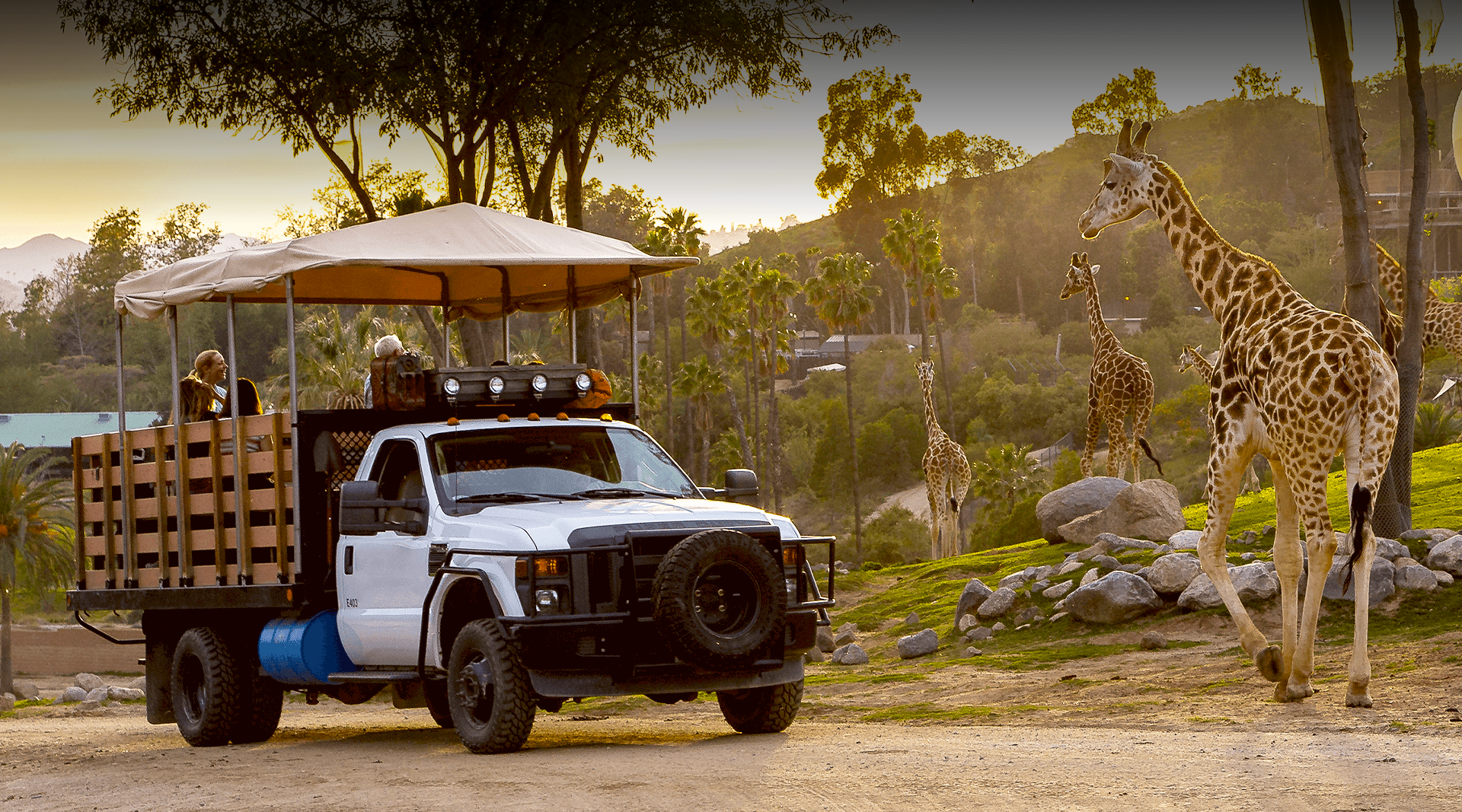
Get ready for an experience you’ll always remember!
Want to get up close and personal with your favorite wildlife, sit back and relax, or tackle a challenging adventure? Choose your safari!
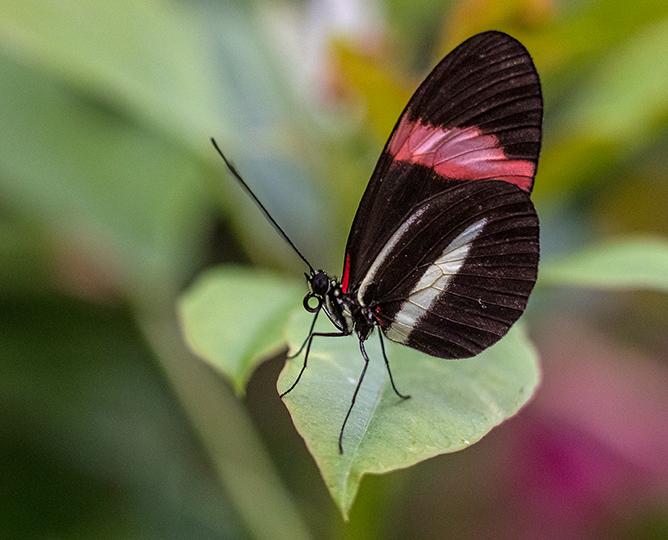
Butterfly Jungle Safari
- $15 per person
Visit Butterfly Jungle in an all new way! Learn about the butterfly life cycle on your way into the Hidden Jungle aviary, then become immersed in the wonder of colorful, fluttering butterflies.
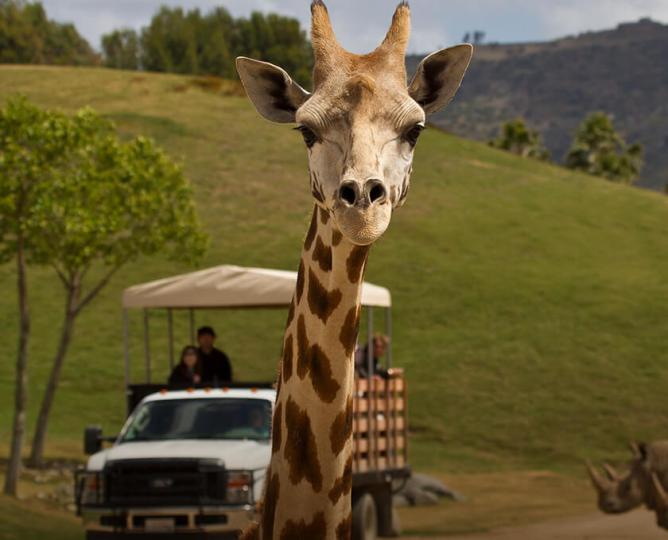
Wildlife Safari
- Ages 3 & up
- $92 & up per person
Travel in the back of a covered, open-air safari truck into our expansive savanna habitats, with an expert guide.
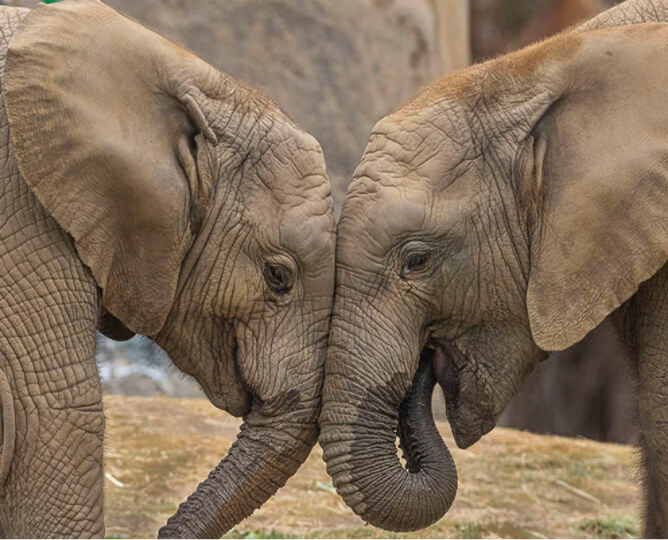
Behind-the-Scenes Safari
These Safaris are guaranteed to thrill and amaze! Your guide will escort you to a variety of locations around the Park to see animals up close and share stories of wildlife care and conservation.
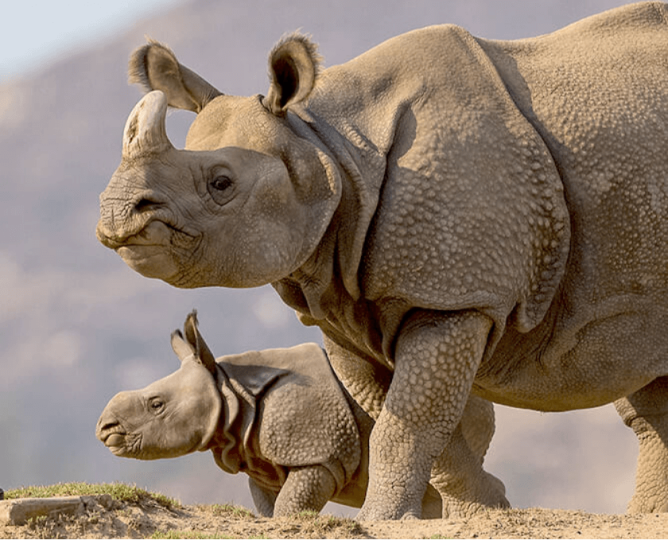
Cart Safaris
- $60 & up per person
Sit back in the comfort of a Safari cart, as you enjoy a 60-minute guided tour of the Park’s spacious African or Asian savanna habitats, led by one of our knowledgeable guides.
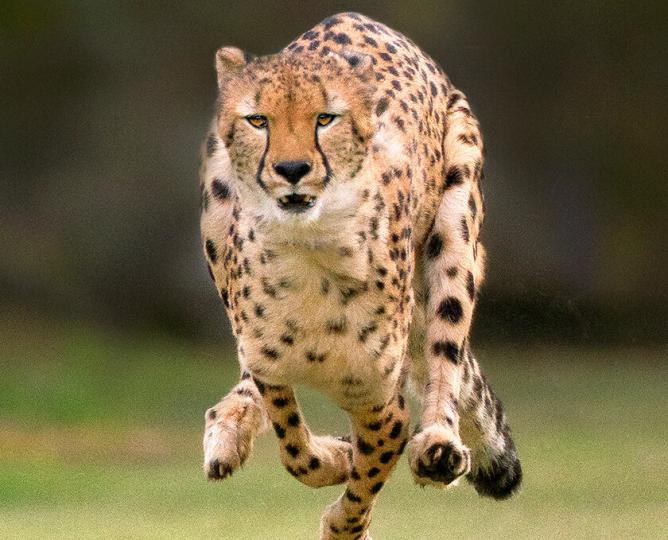
Sun Up Cheetah Safari
- $90 & up per person
Come join us at the Safari Park to see what happens before we open our gates to visitors, including watching a cheetah run at top speed!
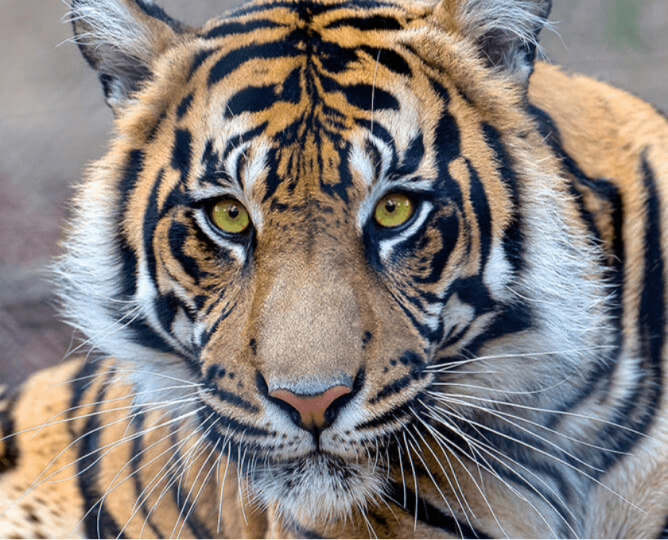
Ultimate Safari
- $710 & up per person
Enjoy a custom safari experience of a lifetime! The Ultimate Safari is your key to exclusive areas, wildlife interactions, and the very best in personalized service.
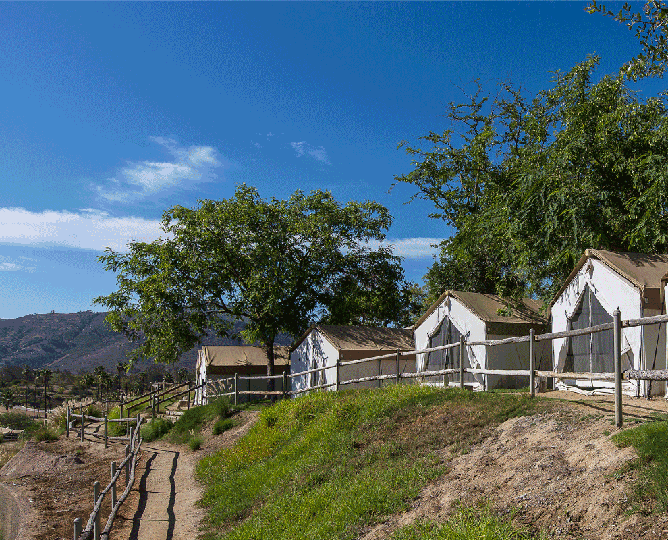
Roar & Snore Safaris
- $160 & up per person
Pack up your “trunk” for a sleepover adventure at the Safari Park! Choose from several age-appropriate sleepover categories with their own themes.
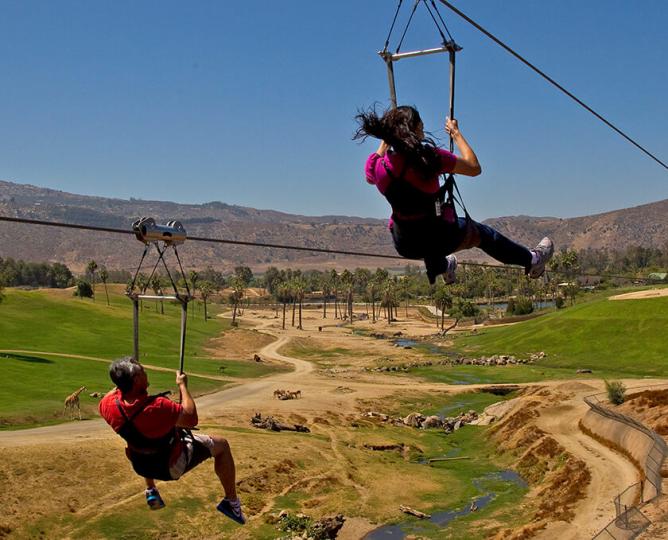
Flightline Safari
- Ages 8 & up
- $81 & up per person
Soar as high as 130 feet above the ground, with a spectacular bird’s-eye view of rhinos, giraffes, and other wildlife in the savanna habitats below you.

Save the Chubby Unicorns

Gorilla Shadow

PREFERRED HOTELS
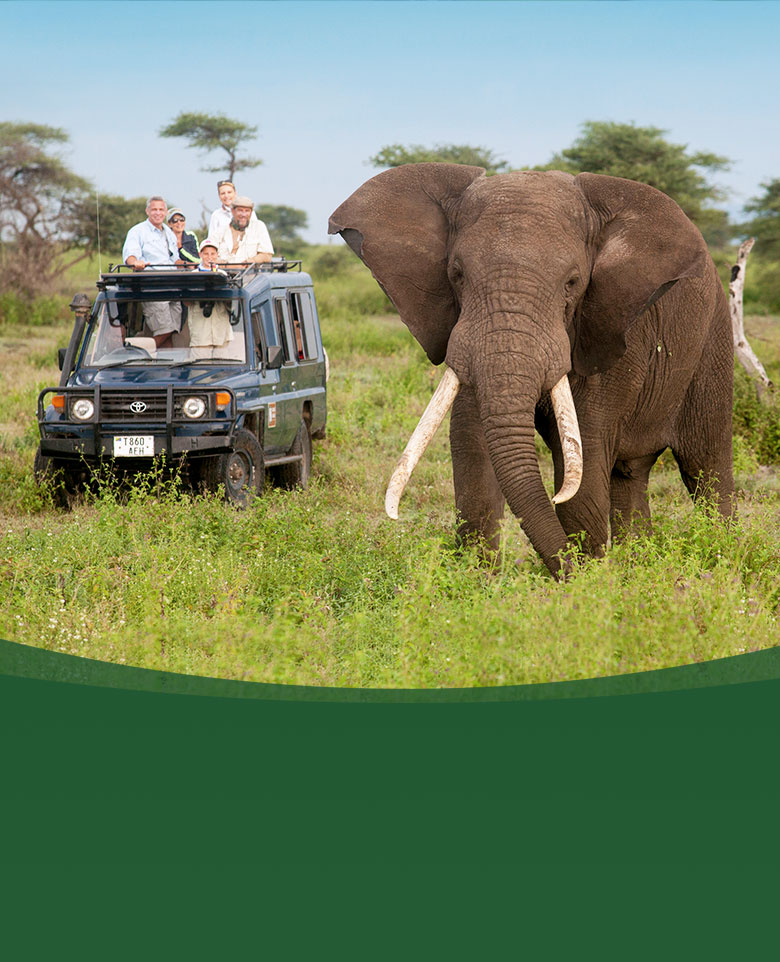
Come Travel with Us!
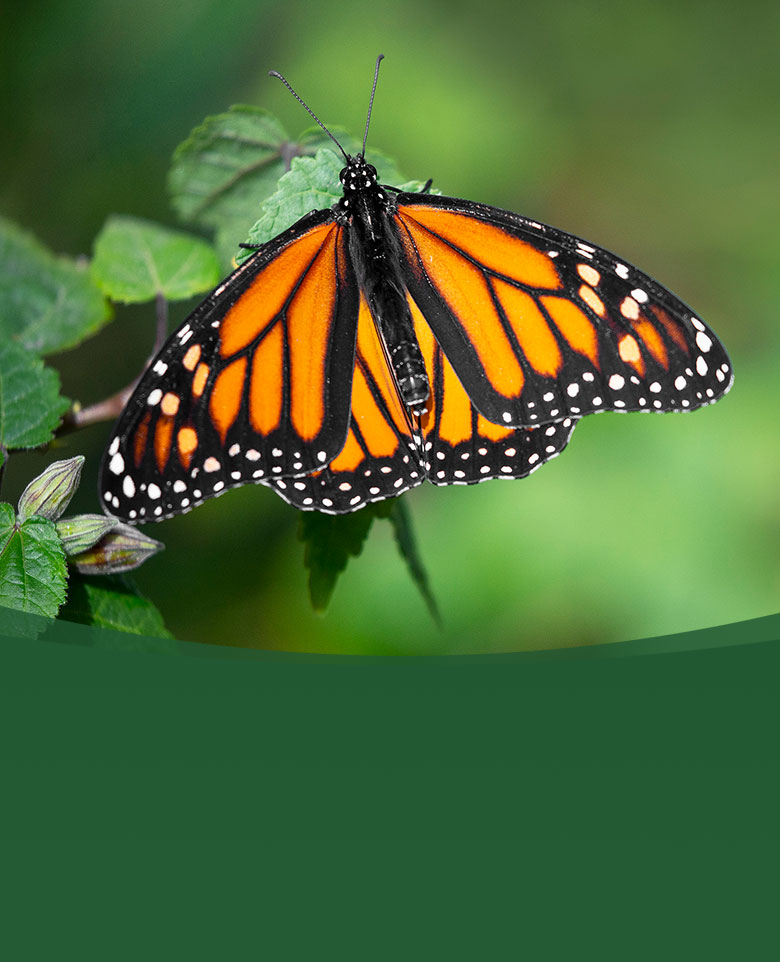
Travel with us to see Monarchs

Picture Your Special Day at the Park!
The Jungle Book
Safari and tours, the jungle book safari and tours.
Welcome to our world of wildlife, mountains, and birds!
At The Jungle Book Safari And Tours , we are passionate about sharing our knowledge and experiences with fellow nature enthusiasts. With over a decade of expertise, we’ve led countless jungle safari, birdwatching tours, ornithological expeditions, and thrilling treks across the majestic mountains of Nepal.
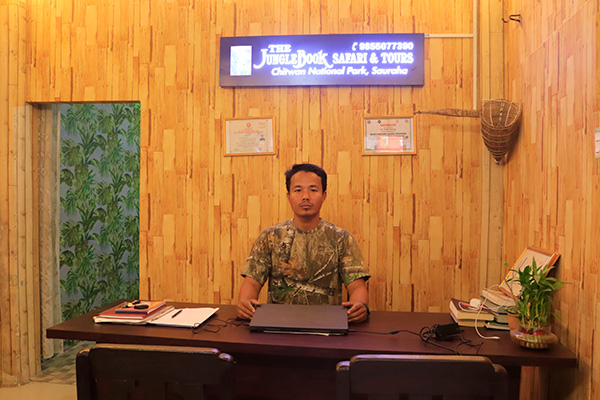
Our Services
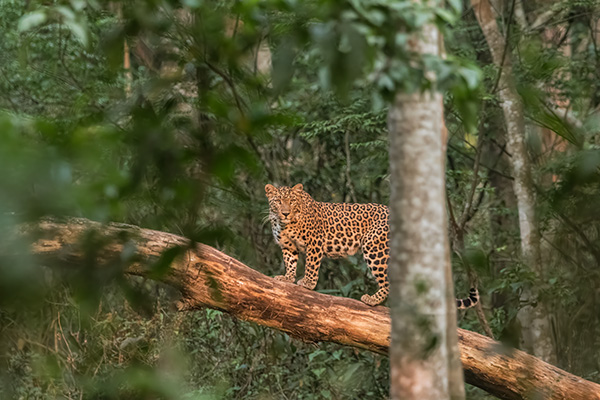
Jungle Safari Packages
Explore the Wilderness with Our Jungle Safari Packages in Chitwan National Park. Step into the heart of nature…

Welcome to our world of adventure, where we offer an unforgettable experience of trekking…
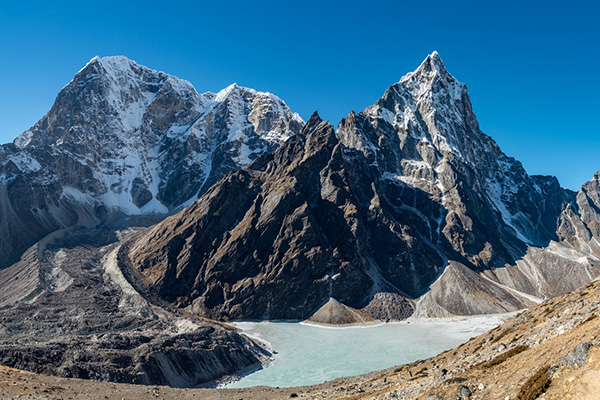
Everest Flight
Experience the Majestic Everest Like Never Before. We are thrilled to offer you an unparalleled adventure…
Involved in
Social work, testimonials, "curabitur non bibendum ligula. in non pulvinar purus. curabitur nisi odio, blandit et elit at, suscipit pharetra elit. fusce ut mauris quam. quisque lacinia quam eu commodo mollis. praesent nisl massa, ultrices vitae ornare sit amet, ultricies eget orci. sed vitae nulla et justo pellentesque congue nec eu risus. morbi ac feugiat ante.", "lorem ipsum dolor sit amet, consectetur adipiscing elit. donec sed finibus nisi, sed dictum eros. quisque aliquet velit sit amet sem interdum faucibus. in feugiat aliquet mollis. etiam tincidunt ligula ut hendrerit semper. quisque luctus lectus non turpis bibendum posuere. morbi tortor nibh, fringilla sed pretium sit amet, pharetra non ex. fusce vel egestas nisl.", "etiam quis blandit erat. donec laoreet libero non metus volutpat consequat in vel metus. sed non augue id felis pellentesque congue et vitae tellus. donec ullamcorper libero nisl, nec blandit dolor tempus feugiat. aenean neque felis, fringilla nec placerat eget, sollicitudin a sapien. cras ut auctor elit.".
No recent searches!
Luxury Trekking in Nepal
- Luxury Everest Base Camp Heli Trek - 9 Days
- Luxury Everest View Trek
- Luxury Everest Base Camp Trek
- Luxury Nepal Tour with Dhampus Sarangkot Trek
- Annapurna in Luxury – 11 Days
- Upper Mustang Heli Trek with Luxury Accommodations in Kathmandu and Pokhara
- VVIP Everest Base Camp Luxury Trek
- Ghorepani Poon Hill Luxury Trekking with optional Chitwan safari
- Everest Base Camp and Gokyo Lakes Luxury Helicopter Trek
- Luxury Everest Base Camp Trek - 14 Days
- Luxury Trekking in Nepal with Pokhara and Dhulikhel
Everest Region Trekking
- Everest Base Camp Trek
- Everest Base Camp Heli Trek with Kala Pathher Fly Over
- Everest Base Camp Trek with Helicopter flight from Kalapathar to Lukla
- Gokyo Lakes and Everest Base Camp Trek
- Gokyo Lakes and Gokyo Ri Trek
Annapurna Region Trekking
- Annapurna Base Camp Trek
- Annapurna Base Camp Trek - 10 Days
- Ghorepani Poon Hill Trek
- Mardi Himal Trek
- Kathmandu and Pokhara Luxury Tour with Dhampus Sarangkot Trek
- Ghorepani Poon Hill Sunrise Trek with Chitwan Jungle Safari
- Annapurna Circuit Trek
- Luxury Nepal Tour with Trek, Safari and Rafting
Luxury Trekking in the Everest Region
- Everest View Luxury Heli Trek
- Everest Base Camp Short Heli Trek 5 Days
- Everest Base Camp Helicopter Trek - All flight by Heli
- Premium Everest Base Camp Heli Trek
Everest Base Camp Trek with Helicopter Return
Manaslu region trekking.
- Manaslu Circuit Trek
- Tsum Valley Manaslu Circuit Trek
- Manaslu Circuit Helicopter Return Trek
Langtang Region Trekking
- Langtang Valley Trek
- Langtang Valley Heli Trek
Luxury Tours in Nepal
- Luxury Nepal Tour with Everest Scenic Flight
- Luxury Tour in Nepal: A 9-Day Journey through Kathmandu, Lumbini, Pokhara, and Chitwan
- Everest Base Camp Helicopter with Kathmandu and Pokhara Luxury Tour
- Everest Helicopter with Luxury Nepal Tour
- Everest Heli with Luxury Kathmandu, Pokhara and birthplace of Buddha
- Kathmandu and Chitwan Luxury Tour with Dhulikhel
- Family Tour in Nepal
- Honeymoon in Nepal
- Destination Wedding in Nepal - All Inclusive
- Luxury Nepal Tour with Everest Scenic flight - 6 Days
Best Selling Nepal Tours
- Luxury Nepal Tour with optional Chitwan, Pokhara and Lumbini
- Golden Triangle Nepal Tour (Kathmandu, Chitwan and Pokhara)
- Luxury Nepal Tour with Everest Landing Helicopter tour
- A adventure sports tour in Nepal
- A adventure sports tour in Nepal with Rafting, Jungle Safari and Mountain Flight
- 2 Days Nepal Tour with Nagarkot
- 3 Days Nepal Tour with Nagarkot
- 4 days Nepal tour with Pokhara
- 5 days Nepal tour with Pokhara and Chitwan Safari
Nepal's Most Popular Tours
- Discover the Splendor of Nepal: An Unforgettable 7-Day Luxury Journey
- The Ultimate 5 Nights 6 Days Luxury Nepal - Discover the Splendor of the Himalayas
- Discover the Heart of Nepal: 4 Nights 5 Days Nepal Luxury Tour Package
- Nepal Luxury Escape
- 9 Days Nepal tour with Pokhara, Lumbini and Safari
- 8 Days Nepal tour with Pokhara, Rafting and Safari
- 7 days Nepal Tour with rafting and safari
- 6 days Nepal tour with Pokhara and Safari
Cultural and Historical Tours
- Kathmandu Luxury Tour with the sunrise view from Nagarkot - 5 Days
- Nepal and Tibet cultural sightseeing Tour
- Nepal Family Tour
6000 M Peaks
- Mt Ama Dablam Expedition (6,812 m)
- Island Peak Expedition (6,160 m)
- Mera Peak Climbing (6,476 m)
- Chulu West Peak Climbing (6,419 m)
- Pisang Peak Climbing (6,091 m)
- Singu Chuli Peak Climbing (6,501 m)
- Island Peak Climbing with Everest Base Camp Trek
- Lobuche Peak Climbing with Everest Base Camp
8000 M Peaks
- Makalu Expedition (8,463m)
- Mt Everest Expedition (8848.86 m)
- Manaslu Expedition (8,163 m)
- Dhaulagiri Expedition (8,167 m)
- Kanchenjunga Expedition (8,586 m)
- Lhotse Expedition (8,516 m)
7000 M Peaks
- Gangapurna Expedition (7,455 m)
- Pumori Expedition (7,145 m)
- Tilicho Peak Expedition (7,134 m)
- Annapurna South Expedition (7,219 m)
- Annapurna Base camp Helicopter landing tour
- Kathmandu Sightseeing tour by Helicopter
- Langtang Helicopter tour
- Upper Mustang Helicopter Tour
- Mardi Himal Helicopter Tour from Pokhara
- Gosaikunda Helicopter Tour
- Everest Base Camp and Gokyo Landing Helicopter Tour
- Everest View Helicopter Tour from Hotel Everest View
- Everest Helicopter Landing Tour with Breakfast - All Inclusive
- Everest Scenic Flight by Plane with Hotel Pickup
- Everest Base Camp Helicopter tour with landing from Kathmandu
- Seven World Heritage Day Tour of Kathmandu Valley
- Private Tour Nagarkot Sunrise View and Day Hiking from Kathmandu
- Private Kathmandu Sightseeing Tour - UNESCO 4 World Heritage Sites
- Private Full-Day Tour With Nagarkot Sunrise and Bhaktapur From Kathmandu
- Chandragiri Cable Car Tour in Kathmandu - Private Half Day Tour
- Best Bhutan Tour 4 Days
- A Seven Day Majestic Bhutan Tour
- Majestic Bhutan: A Seven Day Luxury Bhutan Tour
- Bhutan Magical Tour - 5 Days
- Golden Triangle Bhutan Tour - 6 Days
- Dagala Thousand Lakes Trek - 6 Days
- 2 Nights 3 Days Bhutan Tour: A Glimpse into the Last Shangri-La
- Golden Triangle India Tour with Holy city Varanasi
- Golden Triangle India Tour of Delhi, Jaipur and Agra
- Luxury Dubai Tour with Burj Al Arab
- Best of Dubai Tour - 7 Days
- Tibet Cultural Tour - 8 Days
- Nepal - Bhutan
- Nepal - Tibet
- Nepal - India
- Nepal - Bhutan - Tibet
- Nepal - Bhutan - India
- Everest Base Camp Helicopter Tour & Kathmandu Cultural Tour - 4 Days
- Luxury Nepal Tour with Bardiya National Park Safari
- Make a Payment
- LHN & Responsible Tourism
- Core Values
- Fleets of LHN
- Refund & Cancellation policy
- Terms & Conditions
- Why Luxury Holidays?
- Best low price guaranteed
- Legal Documents
- How to Book a Trip
- Work with us

Jungle Safari in Nepal - A Complete Information

- Apr 5th 2023
- Adventure Activities in Nepal
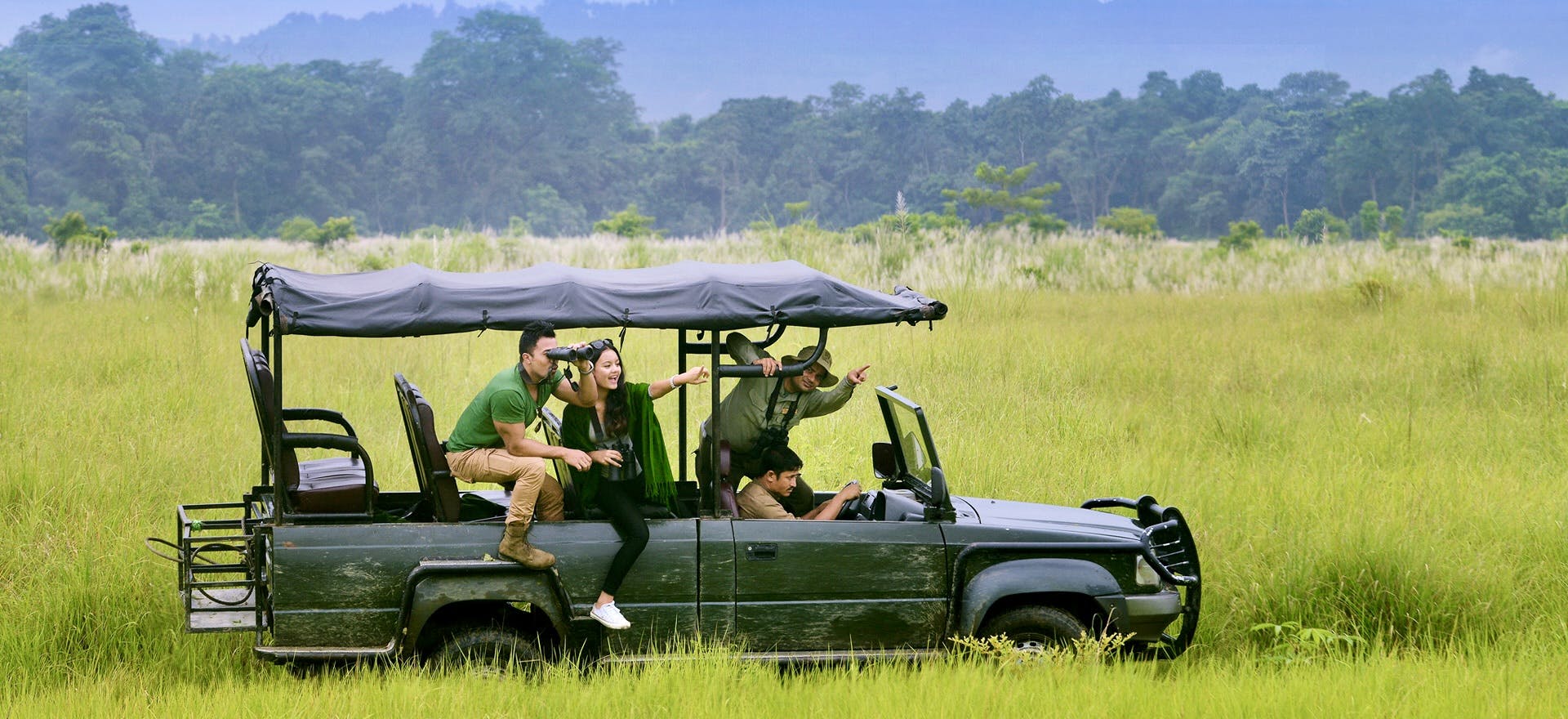
Nestled between the majestic Himalayas and the Indian plains, Nepal is a land of rich biodiversity and stunning landscapes. The country is home to a variety of wildlife and bird species, making it an ideal destination for jungle safaris. In this blog, we'll provide complete information on jungle safaris in Nepal, covering the top national parks, the best time to visit, and the types of safari activities available.
If you need any further information, please contact us by email: at [email protected] , Phone: at +977- 985 100 5129 ( WhatsApp )
Direct Call: +977-9851005129 (Nepal) and + 1 916 794 8443 (USA)
Top National Parks for Jungle Safaris in Nepal
Nepal is home to several national parks and wildlife reserves that offer fantastic opportunities for jungle safaris.
The top national parks for jungle safaris in Nepal include:
Chitwan National Park
A Chitwan National Park safari offers an unforgettable experience for wildlife enthusiasts and nature lovers. Chitwan, a UNESCO World Heritage site, is one of the most popular national parks in Nepal and is home to diverse landscapes, including grasslands, forests, and riverine habitats, which support a wide variety of flora and fauna.

Here's an overview of what you can expect during a Chitwan National Park safari:
Wildlife: Chitwan National Park is home to numerous species, including the endangered one-horned rhinoceros, Bengal tigers, Asian elephants, sloth bears, and various species of deer, monkeys, and reptiles. The park is also a paradise for birdwatchers, with over 500 bird species recorded.
Safari activities: Chitwan offers a range of safari activities, including jeep safaris, canoe rides, jungle walks, and birdwatching tours. Jeep safaris provide a comfortable way to explore the park and cover larger distances, increasing your chances of spotting wildlife. Canoe rides along the Rapti and Narayani rivers offer opportunities to observe aquatic species like crocodiles and various water birds. Jungle walks and birdwatching tours allow you to explore the park on foot and focus on smaller wildlife, plants, and birdlife.
Accommodation: Chitwan National Park has a range of accommodations to suit different budgets and preferences, from basic lodges to luxury resorts. Many lodges and resorts are located in the buffer zone or on the outskirts of the park and offer safari packages, including accommodation, meals, and guided activities.
Getting there: Chitwan National Park is easily accessible from Kathmandu and Pokhara. You can fly from Kathmandu to Bharatpur Airport (about a 25-minute flight) and then drive for about an hour to reach the park. Alternatively, you can take a private vehicle or tourist bus from Kathmandu or Pokhara, which takes approximately 5-6 hours.
Best time to visit: The best time to visit Chitwan National Park is during the dry season from October to March, when the weather is more stable, and wildlife sightings are more frequent.

A safari in Chitwan National Park offers an incredible opportunity to experience Nepal's diverse landscapes and wildlife up close. With its rich biodiversity and range of activities, Chitwan is a must-visit destination for nature lovers and wildlife enthusiasts.
If you need any further information, please contact us by email: at [email protected] , Phone: at +977- 985 100 5129 ( WhatsApp )
Bardia National Park
A Bardia National Park safari offers an immersive experience in one of Nepal's largest and most undisturbed protected areas. Situated in the Terai region, Bardia is known for its diverse landscapes, including riverine forests, grasslands, and savannas, which support a wide variety of flora and fauna. Being less crowded than Chitwan National Park, Bardia provides a more remote and off-the-beaten-path adventure.
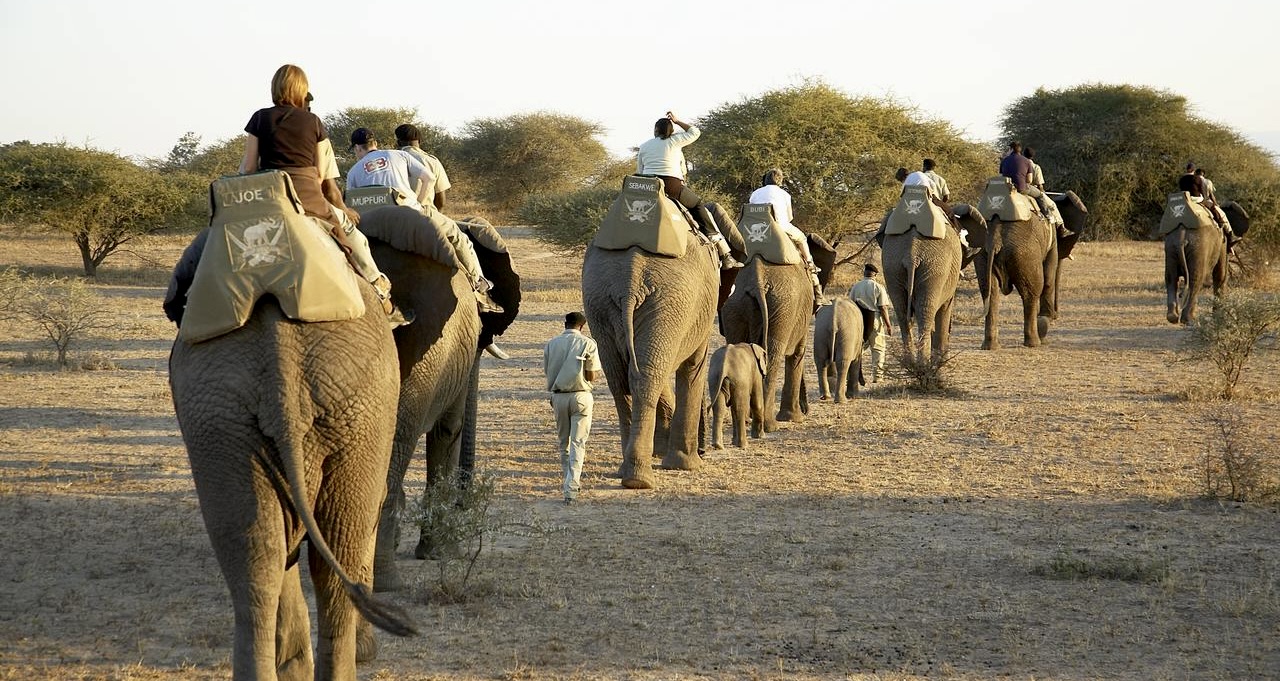
Here's an overview of what you can expect during a Bardia National Park safari:
Wildlife: Bardia is home to many species, including the endangered Bengal tiger, one-horned rhinoceros, Asian elephants, and Gangetic dolphins. Other wildlife includes various species of deer, monkeys, sloth bears, and reptiles. Bardia is also an excellent destination for birdwatching, with over 400 bird species recorded.
Safari activities: Bardia offers a range of safari activities, such as jeep safaris, elephant safaris, jungle walks, and river activities. Jeep safaris provide a comfortable way to explore the park and increase your chances of spotting wildlife. Elephant safaris offer a unique perspective on the park's landscapes and wildlife. Jungle walks led by experienced naturalists provide an opportunity to learn about the park's flora and fauna in more detail. River activities, such as rafting or canoeing, offer chances to observe aquatic species like crocodiles and Gangetic dolphins.
Accommodation: Bardia National Park has various accommodation options, from basic lodges to more upscale resorts. Many lodges and resorts are located near the park and offer safari packages that include accommodation, meals, and guided activities.
Getting there: Bardia National Park can be reached by flying from Kathmandu to Nepalgunj Airport (about an hour-long flight) and then driving for approximately 2-3 hours to reach the park. Alternatively, you can take a private vehicle or tourist bus from Kathmandu, which takes about 12-15 hours.
Best time to visit: The best time to visit Bardia National Park is during the dry season from October to March, when the weather is more stable, and wildlife sightings are more frequent. The months of April and May can also be rewarding, as the water sources start to dry up and animals gather around the remaining waterholes.
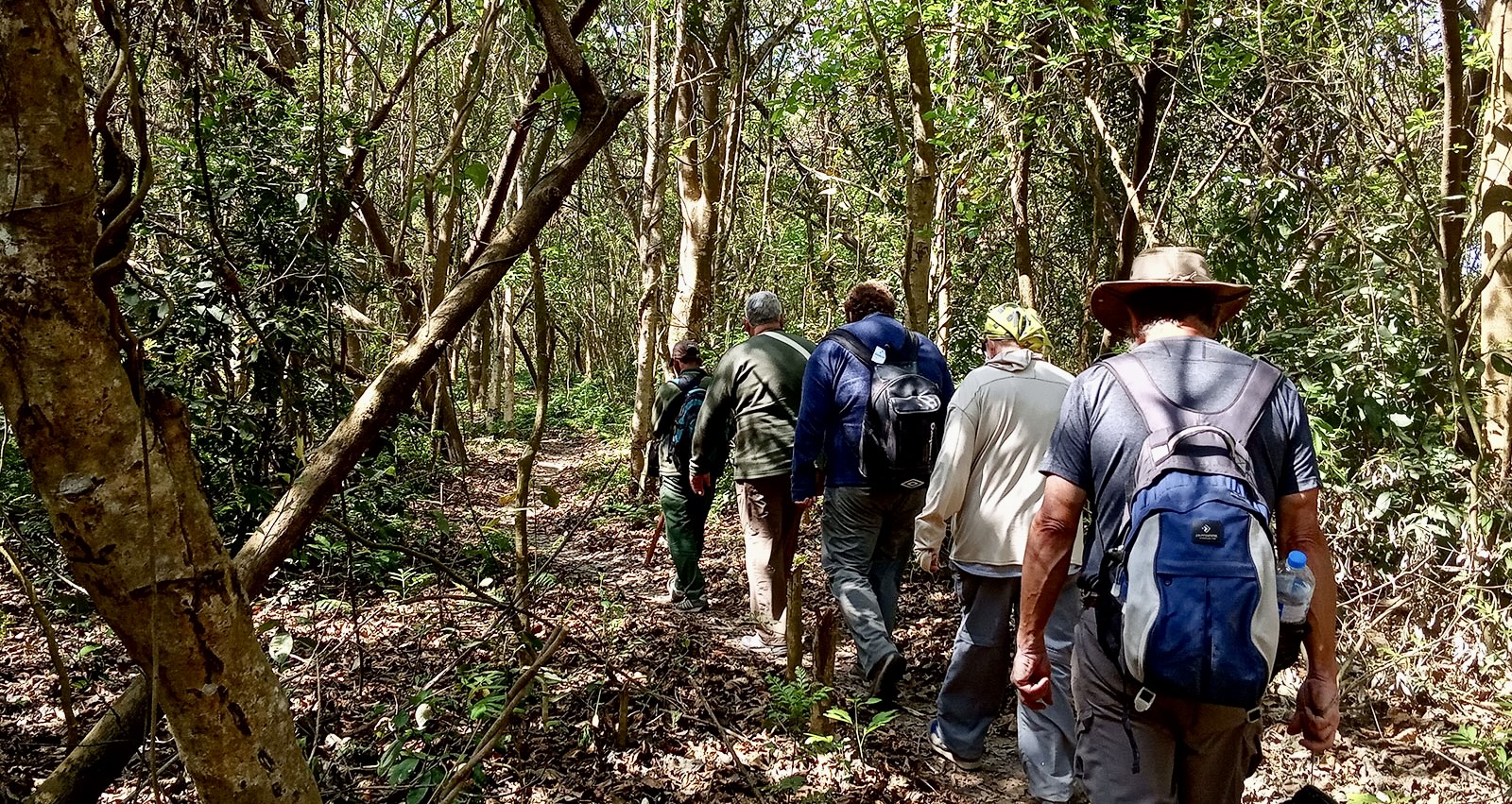
A safari in Bardia National Park offers a memorable experience for nature and wildlife enthusiasts looking for a less-crowded and off-the-beaten-path adventure in Nepal. With its diverse landscapes and abundant wildlife, Bardia is a fantastic destination for an authentic jungle safari experience.
Shuklaphanta National Park
A Shuklaphanta National Park safari offers a unique and less-explored wildlife experience in Nepal. Located in the far-western Terai region, Shuklaphanta is the country's smallest national park, but it boasts diverse landscapes, including grasslands, forests, and wetlands that support a wide variety of flora and fauna.

Here's an overview of what you can expect during a Shuklaphanta National Park safari:
Wildlife: Shuklaphanta is home to many species, including the endangered swamp deer, Bengal tiger, one-horned rhinoceros, and Asian elephants. Other wildlife includes various species of deer, monkeys, sloth bears, and reptiles. The park is also an important destination for birdwatching, with over 350 bird species recorded, including several migratory species.
Safari activities : Shuklaphanta offers a range of safari activities, such as jeep safaris, jungle walks, and birdwatching tours. Jeep safaris provide a comfortable way to explore the park and increase your chances of spotting wildlife. Jungle walks led by experienced naturalists provide an opportunity to learn about the park's flora and fauna in more detail. Birdwatching tours focus on the park's rich birdlife and offer an excellent opportunity for avid birdwatchers.
Accommodation: Shuklaphanta National Park has limited accommodation options compared to Chitwan and Bardia, but there are a few lodges and homestays near the park. These lodges and homestays typically offer safari packages that include accommodation, meals, and guided activities.
Getting there : Shuklaphanta National Park can be reached by flying from Kathmandu to Dhangadhi Airport (about an hour and 10 minutes flight), and then driving for approximately 1.5 hours to reach the park. Alternatively, you can take a private vehicle or tourist bus from Kathmandu, which takes about 14-16 hours.
Best time to visit: The best time to visit Shuklaphanta National Park is during the dry season from October to March, when the weather is more stable, and wildlife sightings are more frequent.
A safari in Shuklaphanta National Park offers a unique opportunity to experience Nepal's wildlife in a less-visited and tranquil setting. With its diverse landscapes and abundant wildlife, Shuklaphanta is an excellent destination for nature lovers and wildlife enthusiasts seeking an off-the-beaten-path adventure.
Parsa Wildlife Reserve
Parsa Wildlife Reserve, located in the south-central lowland Terai region of Nepal, offers a unique wildlife experience that is relatively less explored compared to Chitwan and Bardia National Parks. Parsa is the largest wildlife reserve in the country, covering diverse landscapes, including tropical and subtropical forests, grasslands, and riverine ecosystems that support a wide variety of flora and fauna.

Here's an overview of what you can expect during a Parsa Wildlife Reserve safari:
Wildlife: Parsa Wildlife Reserve is home to various species, including the endangered Bengal tiger, one-horned rhinoceros, Asian elephants, and sloth bears. Other wildlife includes different species of deer, monkeys, leopards, and reptiles. Parsa is also an excellent destination for birdwatching, with over 500 bird species recorded.
Safari activities: Parsa offers a range of safari activities, such as jeep safaris and jungle walks. Jeep safaris provide a comfortable way to explore the reserve and increase your chances of spotting wildlife. Jungle walks led by experienced naturalists provide an opportunity to learn about the reserve's flora and fauna in more detail.
Accommodation: Parsa Wildlife Reserve has limited accommodation options compared to Chitwan and Bardia. However, there are a few lodges, resorts, and homestays near the reserve that offer safari packages, including accommodation, meals, and guided activities.
Getting there: Parsa Wildlife Reserve can be reached by flying from Kathmandu to Simara Airport (about a 20-minute flight) and then driving for approximately 1.5 hours to reach the reserve. Alternatively, you can take a private vehicle or tourist bus from Kathmandu, which takes about 6-7 hours.
Best time to visit: The best time to visit Parsa Wildlife Reserve is during the dry season from October to March when the weather is more stable, and wildlife sightings are more frequent.
A safari in Parsa Wildlife Reserve offers a unique opportunity to experience Nepal's diverse landscapes and wildlife in a less-crowded and off-the-beaten-path setting. With its rich biodiversity and relatively untouched environment, Parsa is an ideal destination for nature lovers and wildlife enthusiasts seeking an authentic jungle safari experience.
- Koshi Tappu Wildlife Reserve
Koshi Tappu Wildlife Reserve, located in the eastern Terai region of Nepal, is a unique and lesser-explored wildlife destination. Established primarily as a waterbird habitat, Koshi Tappu is an important Ramsar Site (wetland of international importance) and boasts diverse landscapes, including wetlands, grasslands, and forests, which support a wide variety of flora and fauna.
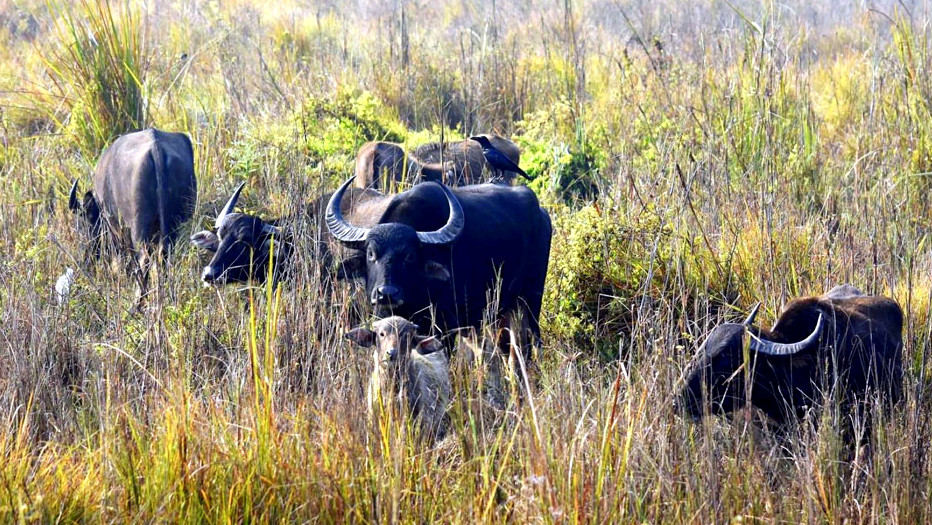
Here's an overview of what you can expect during a Koshi Tappu Wildlife Reserve safari:
Wildlife: Koshi Tappu is a paradise for birdwatchers, with over 490 bird species recorded, including several migratory species. The reserve is also home to the endangered wild water buffalo (Arna) and other wildlife, such as various species of deer, blue bulls, Gangetic dolphins, crocodiles, and otters.
Safari activities: Koshi Tappu offers a range of safari activities, including birdwatching tours, jungle walks, and boat rides. Birdwatching tours focus on the reserve's rich birdlife and provide an excellent opportunity for avid birdwatchers to spot both resident and migratory species. Jungle walks led by experienced naturalists offer an opportunity to learn about the reserve's flora and fauna in more detail. Boat rides along the Koshi River and its floodplains give you a chance to observe aquatic species and enjoy the serene landscapes.
Accommodation: Koshi Tappu Wildlife Reserve has limited accommodation options, but there are a few lodges, resorts, and tented camps near the reserve that cater to visitors. These accommodations typically offer safari packages that include accommodation, meals, and guided activities.
Getting there: Koshi Tappu Wildlife Reserve can be reached by flying from Kathmandu to Biratnagar Airport (about a 45-minute flight) and then driving for approximately 2-3 hours to reach the reserve. Alternatively, you can take a private vehicle or tourist bus from Kathmandu, which takes about 10-12 hours.
Best time to visit: The best time to visit Koshi Tappu Wildlife Reserve is during the dry season from October to March when the weather is more stable, and bird sightings are more frequent. Migratory bird species are usually present from November to February.
A safari in Koshi Tappu Wildlife Reserve offers a unique opportunity to experience Nepal's diverse landscapes and wildlife, particularly for birdwatching enthusiasts. With its rich birdlife and tranquil wetland setting, Koshi Tappu is an excellent destination for nature lovers and wildlife enthusiasts seeking a less-crowded and off-the-beaten-path adventure.
Best Time for Jungle Safaris in Nepal
The best time for jungle safaris in Nepal is during the dry season, which generally lasts from October to March. During this period, the weather is more stable, with clear skies and pleasant temperatures, making it ideal for wildlife viewing and other safari activities. Here's a brief overview of the advantages of visiting during the dry season:
Easier wildlife spotting
- As the vegetation becomes less dense and water sources become limited during the dry season, animals are more likely to gather around the remaining water sources. This increases the chances of sighting wildlife, including larger mammals like tigers, rhinoceros, and elephants.
Better accessibility
- With less rainfall, the roads and trails within the national parks are more easily navigable, ensuring a more comfortable experience during jeep safaris, jungle walks, and other activities.
Pleasant temperatures
- The dry season offers more moderate temperatures compared to the hot and humid monsoon season (June to September) or the colder months in the highlands. This makes outdoor activities like wildlife viewing, birdwatching, and jungle walks more enjoyable.
Fewer mosquitoes
- The dry season is associated with fewer mosquitoes and other insects, making the safari experience more comfortable and reducing the risk of mosquito-borne diseases.
However, it's worth noting that the dry season also coincides with the peak tourist season in Nepal, which may result in higher visitor numbers in popular national parks like Chitwan. If you prefer a more secluded experience, consider visiting lesser-known parks like Bardia or Shuklaphanta, which typically receive fewer tourists.
Types of Safari Activities
There are various safari activities available in Nepal's national parks and wildlife reserves, catering to different interests and adventure levels. Here are some of the most popular types of safari activities:
Jeep safaris
- Jeep safaris provide a comfortable way to explore the park's landscapes and wildlife while covering larger distances. They typically include a knowledgeable guide who can provide information about the flora and fauna encountered during the safari.
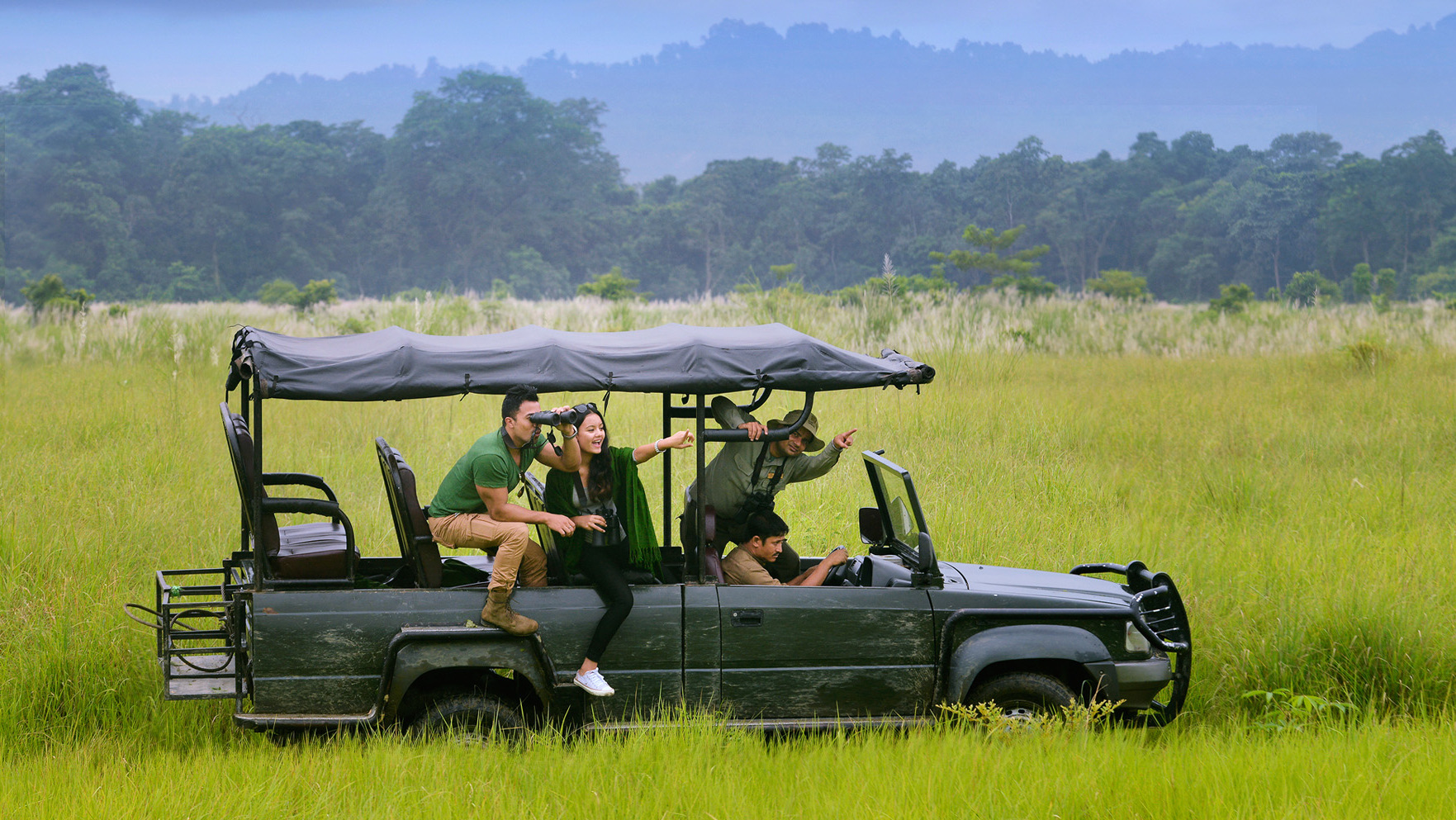
Jungle walks
- Jungle walks, led by experienced guides or naturalists, allow you to explore the park on foot and get closer to nature. These walks are an excellent way to observe smaller wildlife, plants, insects, and birdlife that may be missed during a jeep safari.
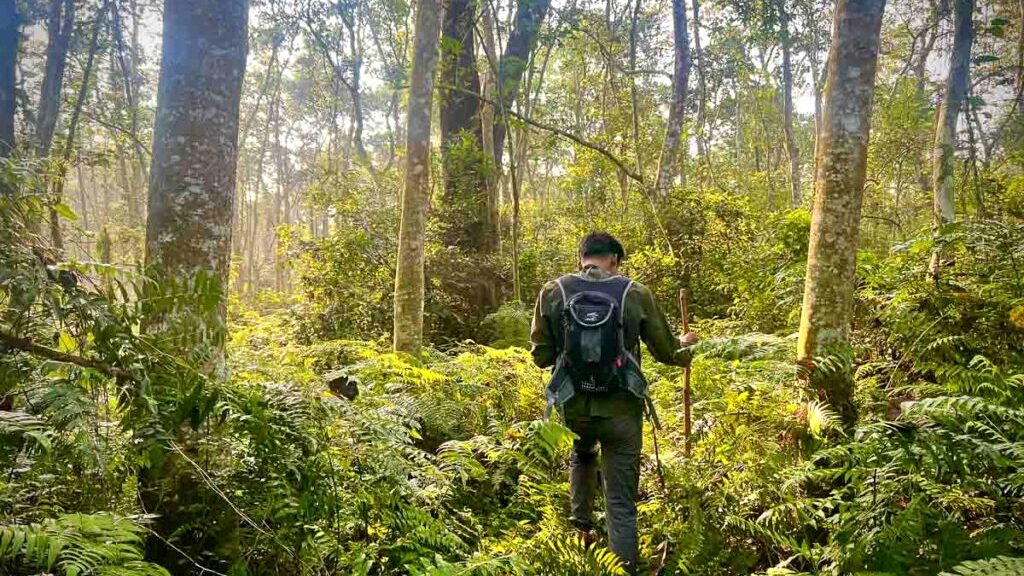
Elephant safaris
- In some national parks, elephant safaris are offered as a way to traverse the dense jungle and grasslands. Riding on the back of an elephant provides a unique vantage point for spotting wildlife, including tigers and rhinoceros.
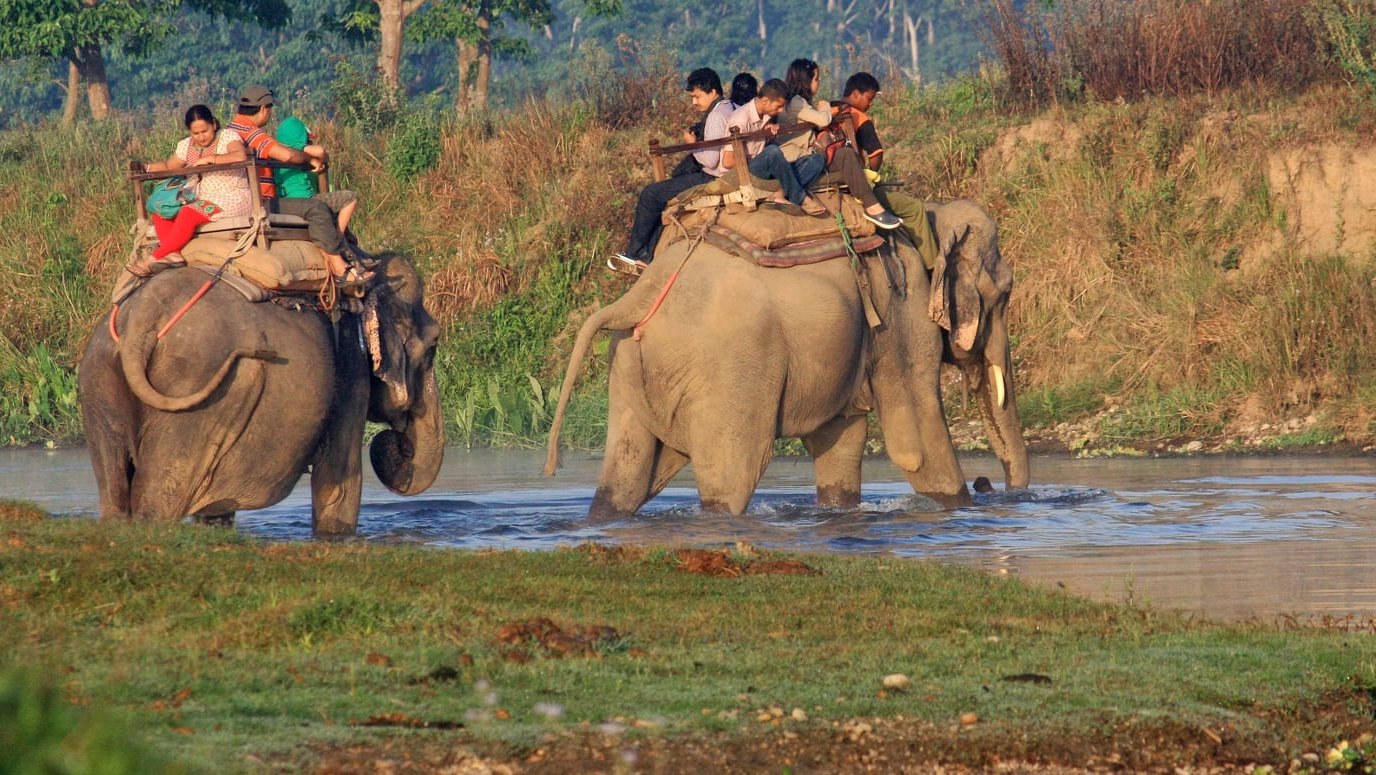
River safaris
- River safaris, usually conducted on canoes or rafts, offer an opportunity to explore the park's waterways and observe aquatic wildlife, such as crocodiles, water birds, and occasionally mammals that come to drink or bathe in the river.

Birdwatching tours
- Nepal is home to a rich diversity of bird species, making it a paradise for birdwatchers. Guided birdwatching tours are available in most national parks and focus on observing and identifying various bird species in their natural habitats.
Village walks and cultural experiences
- In addition to wildlife-focused activities, we offer village walks and cultural experiences, providing insight into the local community's lifestyle and traditions. These activities may include visits to local homes, schools, markets, or traditional dance performances.
Wildlife photography
- For photography enthusiasts, many national parks and lodges offer guided wildlife photography tours or workshops. These activities focus on helping participants improve their photography skills while capturing stunning images of wildlife and landscapes.
When planning a jungle safari in Nepal, consider your interests, adventure level, and time constraints to choose the types of safari activities that best suit your preferences.
Accommodations and Luxury Jungle Safaris
Nepal offers a wide range of accommodations for jungle safaris, catering to various budgets and preferences. From basic lodges to luxurious safari camps, visitors can choose the type of stay that best suits their needs.
Basic lodges and guesthouses
- For budget-conscious travelers, there are simple lodges and guesthouses available in and around the national parks. These accommodations generally provide basic amenities, such as clean rooms, private or shared bathrooms, and local meals.
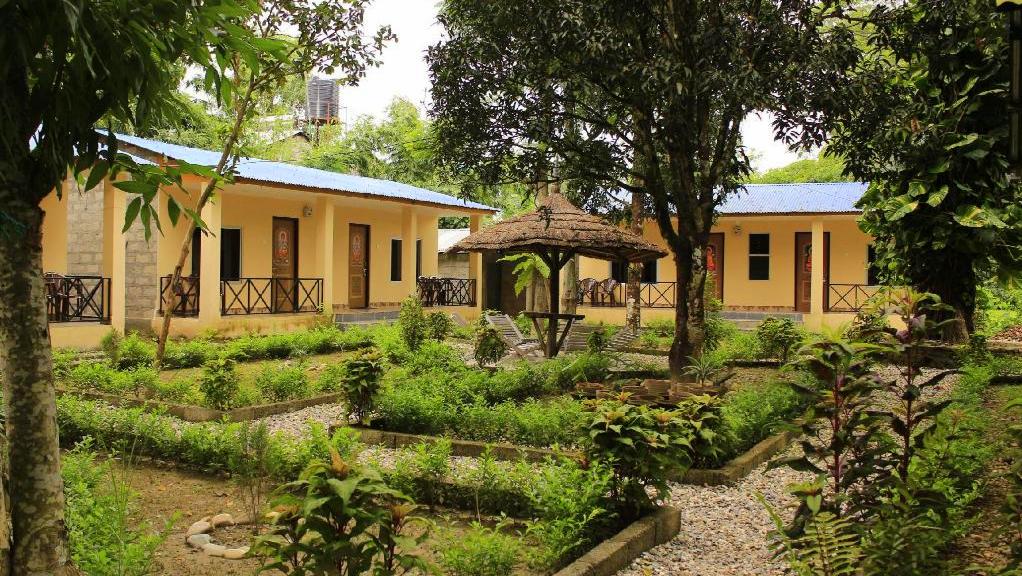
Mid-range hotels and resorts
- Mid-range accommodations offer a higher level of comfort and amenities compared to basic lodges. They usually include private rooms with attached bathrooms, air conditioning, on-site restaurants, and sometimes a swimming pool or other recreational facilities.
Luxury lodges and safari camps
- For those seeking a more indulgent experience, luxury lodges and safari camps offer upscale amenities, personalized services, and exclusive wildlife experiences. Some features of luxury jungle safaris may include:

Luxurious accommodations: High-end lodges and camps often feature spacious and well-appointed rooms, suites, or tented accommodations with comfortable beds, en-suite bathrooms, and stylish furnishings.
Gourmet dining: Luxury safari accommodations usually offer on-site restaurants or dining areas, where guests can enjoy delicious meals prepared by skilled chefs using fresh, local ingredients. Some may even offer private dining experiences or outdoor meals in scenic locations.
Personalized service: Luxury lodges and camps often have a lower guest-to-staff ratio, ensuring attentive service and personalized experiences. This may include tailored safari activities, private guides, or customized itineraries to cater to individual preferences.
Exclusive wildlife experiences: Luxury jungle safaris often provide exclusive wildlife encounters or activities, such as private game drives, guided walks with experienced naturalists, or birdwatching tours with expert guides.
Spa and wellness facilities: Some luxury lodges and camps offer on-site spa and wellness facilities, where guests can relax and rejuvenate after a day of exploring the park.
When planning a jungle safari in Nepal , consider your budget, preferences, and desired level of comfort when choosing accommodations. Luxury jungle safaris provide an opportunity to experience the country's stunning wilderness in style, offering unparalleled comfort and exclusive wildlife encounters.
Getting to the National Parks
Getting to Nepal's national parks and wildlife reserves for jungle safaris typically involves a combination of flights and road transfers. Here's a brief overview of the different transportation options available for the most popular national parks:
- Flight: Fly from Kathmandu to Bharatpur Airport, which takes about 25 minutes. From Bharatpur, it's approximately a one-hour drive to Chitwan National Park.
- Road: Travel by private vehicle or tourist bus from Kathmandu or Pokhara to Chitwan, which takes approximately 5-6 hours.
- Flight: Fly from Kathmandu to Nepalgunj Airport, which takes about an hour. From Nepalgunj, it's approximately a 2-3 hour drive to Bardia National Park.
- Road: Travel by private vehicle or tourist bus from Kathmandu to Bardia, which takes about 12-15 hours.
- Flight: Fly from Kathmandu to Biratnagar Airport, which takes about 40 minutes. From Biratnagar, it's approximately a 2-hour drive to Koshi Tappu Wildlife Reserve.
- Road: Travel by private vehicle or tourist bus from Kathmandu to Koshi Tappu, which takes about 10-12 hours.
- Road: Travel by private vehicle or tourist bus from Kathmandu to Parsa Wildlife Reserve, which takes about 6-7 hours.
- Flight: Fly from Kathmandu to Dhangadhi Airport, which takes about an hour and 10 minutes. From Dhangadhi, it's approximately a 1.5-hour drive to Shuklaphanta National Park.
- Road: Travel by private vehicle or tourist bus from Kathmandu to Shuklaphanta, which takes about 14-16 hours.
Depending on your destination and preferences, you can choose the most convenient transportation method for your jungle safari in Nepal. Keep in mind that flight schedules may be subject to weather conditions and delays, so it's essential to plan accordingly and have some flexibility in your travel plans.
Packing Essentials for a Jungle Safari
Packing the right items for a jungle safari in Nepal is essential for ensuring a comfortable and enjoyable experience. Here is a list of packing essentials to consider when preparing for your trip:
- Lightweight, breathable clothing in neutral colors (greens, browns, and khakis) that blend with the environment
- Long-sleeved shirts and long pants to protect against sunburn, insects, and scratches from vegetation
- A light jacket or sweater for cooler mornings and evenings
- Comfortable, sturdy walking shoes or hiking boots
- Sandals or flip-flops for relaxing around the lodge
- A hat or cap for sun protection
- A rain jacket or poncho during the monsoon season
Accessories
- Sunglasses with UV protection
- Sunscreen with a high SPF
- Insect repellent with DEET or other effective active ingredients
- A reusable water bottle
- A small daypack or backpack for carrying essentials during safari activities
- A travel towel (optional, depending on your accommodation)
Gadgets and gear
- Binoculars for better wildlife viewing and birdwatching
- A camera with a zoom lens for capturing wildlife and landscapes
- Extra memory cards and batteries for your camera
- A portable power bank for charging devices
- A flashlight or headlamp with spare batteries
Personal items
- Personal medications, including any prescription drugs and over-the-counter remedies for common ailments
- (headaches, stomach upsets, etc.)
- A basic first aid kit with adhesive bandages, antiseptic wipes, and any other necessary items
- Toiletries, including soap, shampoo, toothbrush, toothpaste, and any other personal care items
- Wet wipes or hand sanitizer for easy hand cleaning in the field
- A lightweight, quick-drying travel towel (optional, depending on your accommodation)
Travel documents and money
- Passport and visa (if required)
- National park permits and entrance tickets
- Travel insurance documents
- Local currency or a credit/debit card for any additional expenses
By packing these essentials, you'll be well-prepared for your jungle safari in Nepal and ready to fully enjoy the country's stunning landscapes and diverse wildlife.
Park Rules and Regulations
National parks and wildlife reserves in Nepal have specific rules and regulations to ensure the protection of wildlife, their habitats, and the overall ecosystem. Visitors must adhere to these guidelines to minimize their impact on the environment and help maintain the parks' ecological balance. Some general park rules and regulations include:

Entry and permits
- Obtain the necessary permits and entry tickets for the park you are visiting. These are usually arranged by us or can be purchased at the park entrance.
Stay on designated trails
- Do not venture off designated trails or into restricted areas within the park. This helps protect the environment and avoids disturbing wildlife.
Do not disturb wildlife
- Maintain a safe distance from all animals and do not approach, feed, or harass them in any way. Use binoculars or a zoom lens for a closer view without disturbing the animals.
Observe silence
- Keep noise levels to a minimum, as loud sounds can disturb wildlife and negatively impact other visitors' experiences.
No littering
- Do not leave any litter or waste in the park. Carry a small bag or container to collect your trash and dispose of it properly outside the park or at designated waste disposal areas within the park.
No smoking or alcohol consumption
- Smoking and alcohol consumption are generally prohibited within national parks and wildlife reserves.
Do not collect plants or animals
- Do not pick plants, flowers, or fruits, or remove any animals, dead or alive, from the park. Everything in the park is protected and should be left undisturbed.
Camp only in designated areas
- If camping is allowed in the park, set up camp only in designated areas and follow the park's guidelines for campfires, waste disposal, and noise levels.
Respect local customs and traditions
- Some parks may have sacred sites or cultural areas that require specific behavior or dress codes. Follow any guidelines provided by park authorities or local communities.
Follow your guide's instructions
- Our guide is trained and experienced in navigating the park safely and responsibly. Follow their instructions and advice to ensure a safe and enjoyable safari experience.
By adhering to these park rules and regulations, you can help preserve Nepal's national parks and wildlife reserves for future generations while enjoying a responsible and sustainable jungle safari experience.
A jungle safari in Nepal is an unforgettable experience that offers a unique opportunity to explore the country's diverse landscapes and encounter its rich wildlife. By following this comprehensive guide, you'll be well-prepared for your safari adventure and ready to create lasting memories in Nepal's pristine wilderness.
- Jungle safari in Nepal
- Chitwan National Park safari
- Bardia National Park safari
- Shuklaphanta National Park safari
- Parsa Wildlife Reserve safari
- Hidden Waterfalls around Kathmandu
- Trekking in Nepal
Drop us a message

Mr. Luxury Holidays Nepal Adventure and Helicopter Tour Company
Luxury Holidays Nepal Adventure and Helicopter Tour Company has been a reputable adventure and tour operator in the Himalayas since 2014. The company prides itself on being the top guiding adventure travel company for Mount Everest Base Camp and beyond, boasting an impressive 98% success rate. With a focus on personalized experiences, the company offers tailor-made holiday packages designed to suit the needs of all types of travelers, including those traveling solo, with family, or in groups. Regardless of age, travelers can expect a unique and unforgettable adventure when booking with Luxury Holidays Nepal Adventure and Helicopter Tour Company.
Blog by Categories
- Adventure Activities in Nepal 22

Severe flooding In Russia And Kazakhstan Led To Evacuation Of 100000
Columbia amazon deforestation reduced by 25%-35% in 2023.

Global Heat Reaches New Record High In March

Experts Predict Unknown Impacts Of 2024 Total Solar Eclipse On Flora And Fauna

Russia Floods: Thousands Evacuated After Dam Burst Led To Rising Water Levels
- Click here to read All News
- Biotechnology Basics
- Biotechnology Advanced
- Bioremediation
- Natural Resource Management
- Carbon Footprint & Carbon Accounting
- Climate Change
- Air Pollution
- Noise Pollution
- Water Pollution
- Environmental Impact Assessment
- Disaster Management
- Carbon Trading
- Green Energy
- Plastic Waste Management
- Solid Waste Management
- Wastewater Management
- All Categories
- Referral Program
- Advertise with us
Select Page
Best Sustainable Safari Tips For Your Next Jungle Trip
by Sarah Tancredi | Nov 9, 2023 | Sustainability
Embarking on a jungle safari is a thrilling and awe-inspiring adventure that allows travelers to immerse themselves in the wonders of untamed nature and witness majestic wildlife up close. However, as our understanding of environmental conservation grows, so does our responsibility as conscious travelers to ensure that our experiences benefit the delicate ecosystems we encounter. Sustainable safaris offer a harmonious way to explore the jungles while preserving their pristine beauty for future generations. This article explores the importance of adopting sustainable practices during jungle trips, focusing on ecotourism, wildlife protection , community engagement, and responsible travel habits . As eco-conscious adventurers, our choices can make a meaningful difference in safeguarding these precious habitats and the incredible species that call them home.
Table of Contents
The Importance of Sustainable Safaris
Sustainable safaris play a pivotal role in safeguarding the delicate balance of jungle ecosystems and promoting responsible tourism. Sustainable practices are essential during a safari because they directly impact wildlife preservation, biodiversity, and the environment’s overall health.

Eco-Tourism and Sustainability
Ecotourism and sustainability are closely linked concepts involving responsible travel, environmental conservation, and community well-being. Ecotourism refers to tourism that focuses on visiting natural areas, supporting local communities, and promoting conservation efforts. Sustainability, on the other hand, entails meeting the needs of the present without compromising the ability of future generations to meet their own needs.

Best Sustainable Safari Tips
1. choose a responsible safari operator.
When selecting a responsible safari operator, choose one committed to eco-friendly practices and wildlife conservation. They help you emphasize low-impact activities, support local communities, and follow ethical wildlife viewing guidelines. Ensure they prioritize eco-friendly accommodations, waste reduction, and conservation initiatives. You can immerse yourself in the jungle’s incredible splendor while helping to benefit the environment and local communities. Choose a sustainable safari operator to embark on an unforgettable adventure while preserving the wilderness for future generations.
2. Respect Wildlife
It is paramount to respect wildlife to maintain the delicate balance of the jungle ecosystem. Adhering to ethical guidelines ensures the well-being of animals and their habitats. Observe wildlife from a safe distance, avoiding interference with their natural behaviors. Refrain from feeding or touching animals, as it can disrupt their ecological roles and lead to dependency on humans. Responsible wildlife viewing contributes to preserving biodiversity and fosters harmonious coexistence with nature. By respecting wildlife during your sustainable safari, you play a crucial role in safeguarding the jungle’s incredible inhabitants and supporting their long-term conservation.
3. Stay in Eco-Friendly Accommodations
During your sustainable safari, prioritize staying in eco-friendly accommodations to minimize environmental impact. Choose lodges or camps that implement sustainable practices such as using renewable energy sources, conserving water, and recycling waste. Eco-friendly accommodations often have a lower carbon footprint and contribute to preserving the surrounding natural environment. By supporting such establishments, you are promoting sustainable tourism and helping to safeguard the fragile jungle ecosystems. Enjoy the comfort of eco-friendly lodgings while knowing that your stay contributes to the long-term conservation efforts of the wildlife and habitats you have come to admire.
4. Minimize Plastic Waste
In a sustainable safari, minimizing plastic waste is essential to protecting the jungle’s pristine environment. Take reusable water bottles and avoid single-use plastic items like straws and bags. Choose eco-friendly toiletries and personal care products with biodegradable packaging. Properly dispose of plastic waste and participate in lodge or camp recycling programs. By reducing plastic usage , you help preserve wildlife habitats, preventing harm to animals that may ingest or become entangled in plastic debris. Embrace the responsibility of being a conscious traveler and help keep the jungle clean and plastic-free for a sustainable and enjoyable safari experience.
5. Follow The “Leave No Trace” Principle
Embracing the “ leave no trace ” principle is crucial for a sustainable safari experience. This ethos encourages travelers to minimize their impact on the jungle’s natural environment. Avoid leaving any physical evidence of your presence, such as litter or damage to plants and wildlife. Stay on designated trails and paths to protect delicate ecosystems. Refrain from collecting souvenirs or disturbing cultural artifacts. By adhering to the “leave no trace” principle, you contribute to the jungle’s preservation, ensuring that future generations can also revel in its wonders. Let responsible travel be the guiding force in leaving the jungle untouched and unharmed.
6. Choose Low-Impact Activities
Opt for low-impact activities to minimize your ecological footprint on a sustainable safari. Choose activities that cause minimal disturbance to the jungle’s delicate ecosystems and wildlife. Walking safaris, guided nature hikes, and canoeing are excellent low-impact options that allow you to immerse yourself in the natural surroundings without causing harm. These activities promote wildlife conservation and preserve the integrity of the jungle’s diverse habitats. By engaging in low-impact activities, you actively contribute to the sustainability of the safari experience and support the long-term health of the environment, ensuring that the wonders of the jungle remain intact for future generations.
7. Use Biodegradable and Eco-Friendly Products
Choose biodegradable and eco-friendly products to reduce environmental impact in a sustainable safari. Choose biodegradable sunscreen, shampoo, soap, and other personal care items to minimize water pollution and protect aquatic life. Use eco-friendly insect repellents and cleaning agents that do not harm the delicate ecosystem . Using these products, you prevent harmful chemicals from entering the jungle’s ecosystems and support environmentally responsible practices. Embrace biodegradable and eco-friendly products during your safari to ensure that your journey remains sustainable and preserves the jungle’s natural splendor for future generations.
8. Support Local Communities
Supporting local communities is vital for responsible travel on a sustainable safari. Engage with local artisans, guides, and businesses to contribute directly to the well-being of the people who call the jungle their home. Purchase locally-made souvenirs and products to support the local economy and empower communities. Participate in cultural activities and interact respectfully with the locals, learning about their traditions and ways of life. By supporting local communities, you play an essential role in promoting sustainable development, preserving cultural heritage, and ensuring that the benefits of tourism reach those who live in and protect the jungle every day.
9. Offset Your Carbon Footprint
Offsetting your carbon footprint is crucial to ensuring a sustainable safari experience. Traveling to your jungle destination may result in carbon emissions leading to climate change. By participating in carbon offset programs , you can compensate for these emissions by supporting projects that reduce or remove greenhouse gases from the atmosphere. Such projects may include reforestation efforts, renewable energy initiatives, or sustainable agriculture practices. Carbon offsetting helps counteract the environmental impact of your travel and demonstrates a commitment to environmental responsibility. By offsetting your carbon footprint, you help safeguard wildlife and the jungle, making your safari journey more sustainable and planet-friendly.
10. Practice Responsible Photography
Responsible photography is essential for respecting wildlife and their habitats in a sustainable safari. Follow ethical guidelines to avoid causing stress or disturbance to animals. Refrain from using flash photography. It can startle or harm wildlife, especially during nighttime activities. Maintain a safe distance from animals and never bait or lure them for a photo opportunity. Respect restricted areas and cultural sensitivities when taking pictures. Responsible photography allows you to capture the beauty of the jungle while ensuring the well-being of its inhabitants. By being mindful of the impact of your photography, you can contribute to the conservation and preservation of precious wildlife in their natural environment.
Also Read: Biodiversity Conservation
Embarking on a sustainable safari in the jungle is a breathtaking adventure and a crucial step towards responsible travel and conservation. By prioritizing ecotourism, respecting wildlife, supporting local communities, and practicing responsible habits, we can ensure that our journeys benefit delicate ecosystems and wildlife. Sustainable safaris offer a unique opportunity to experience the wonders of nature while preserving the natural heritage for future generations. Let us embrace the principles of sustainability on our jungle trips, making a collective effort to protect and cherish these invaluable ecosystems that are vital for the health of our planet.
Also Read: Green Travel: Travel the World, Leave Only Footprints
Submit a Comment Cancel reply
Your email address will not be published. Required fields are marked *
Save my name, email, and website in this browser for the next time I comment.
Submit Comment
Explore Categories
Related posts.
- How Corporates Are Reviving The Lost Crafts Of India
- Highest Paying ESG Consultant Jobs In The US
- Protein and Gene Manipulation
- 15 Best Sustainable Men's Clothing Brands Of 2024
- Top Environmental Reporting Jobs In The USA

Safari Vs Jungle – What is the Difference Between Safari and Jungle?

5 Best Discovered Tourist Destinations in the World

How to Do Bungee Jumping at the Beach

Stay Safe at All Times — Guide to Buying Amber Flashing Lights

Where to Visit the Best Beaches in the World

Discover Sri Lanka’s Top Hotels: A Luxurious Escape

The Ultimate Guide to House Scouting While Traveling Across Canada

Discover Thailand’s Top Islands: Paradise Found!

Sightseeing Ideas for Your Next Trip to Europe

Drink The Best Drinks In The New Bars In Houston Now

Airbnb launches adventure journey stories for intrepid globetrotters

Women-most effective journey trips turning into famous

Top 10 Ski Resorts in East Coast the USA
- Cookie Policy
- Privacy Policy
- Terms of Use

- Adventure Travel
- Budget Travel
- Business Traveling
- Mountain Travel
- Travel Photography
- Travel Insurance
- Travel Guides
- Passport And Visa
- Hotel Accommodation
- Holiday Destination
- Hotel And Resort
- Ski Resorts
- Jungle Safari
- Sea And Beaches
- Desert Safari
- Food And Drink
Safari Vs. The jungle is an online browser that works on Mac and Windows. It is fast, user-friendly, and has features that no other browser has. The main downside is that Safari is not open source . However, it can be easily downloaded from the Apple website for free.
The jungle is an online browser that works on Mac and Windows. It is also very user-friendly and has lots of useful features. The main downside is that Jungle is not open source. The Jungle Book is the best Disney movie ever made. The film is a classic, and it’s one of my favorites. However, the safari version of the film is just as good, if not better.
If you want to see real Africa, goo on a safari in South Africa and see the amazing wildlife and scenery. But if you want to be closer to nature, visit the jungle and take a walk through the rainforest. If you love animals, then this is a must-watch video! It’s about two animals from different worlds fighting each other in the wild .
The battle between Safari and Chrome has been raging since day 1. And while it seems that Safari is the clear winner right now, it’s not the end of the story.
Safari and Chrome are the two most used browsers in the world. They are also the two most important browsers.
In this post, we will dive deep into the history of Safari vs. Chrome and see what happened.
We’ll also look at the future of the web and how Safari and Chrome are preparing for a fight to the death.
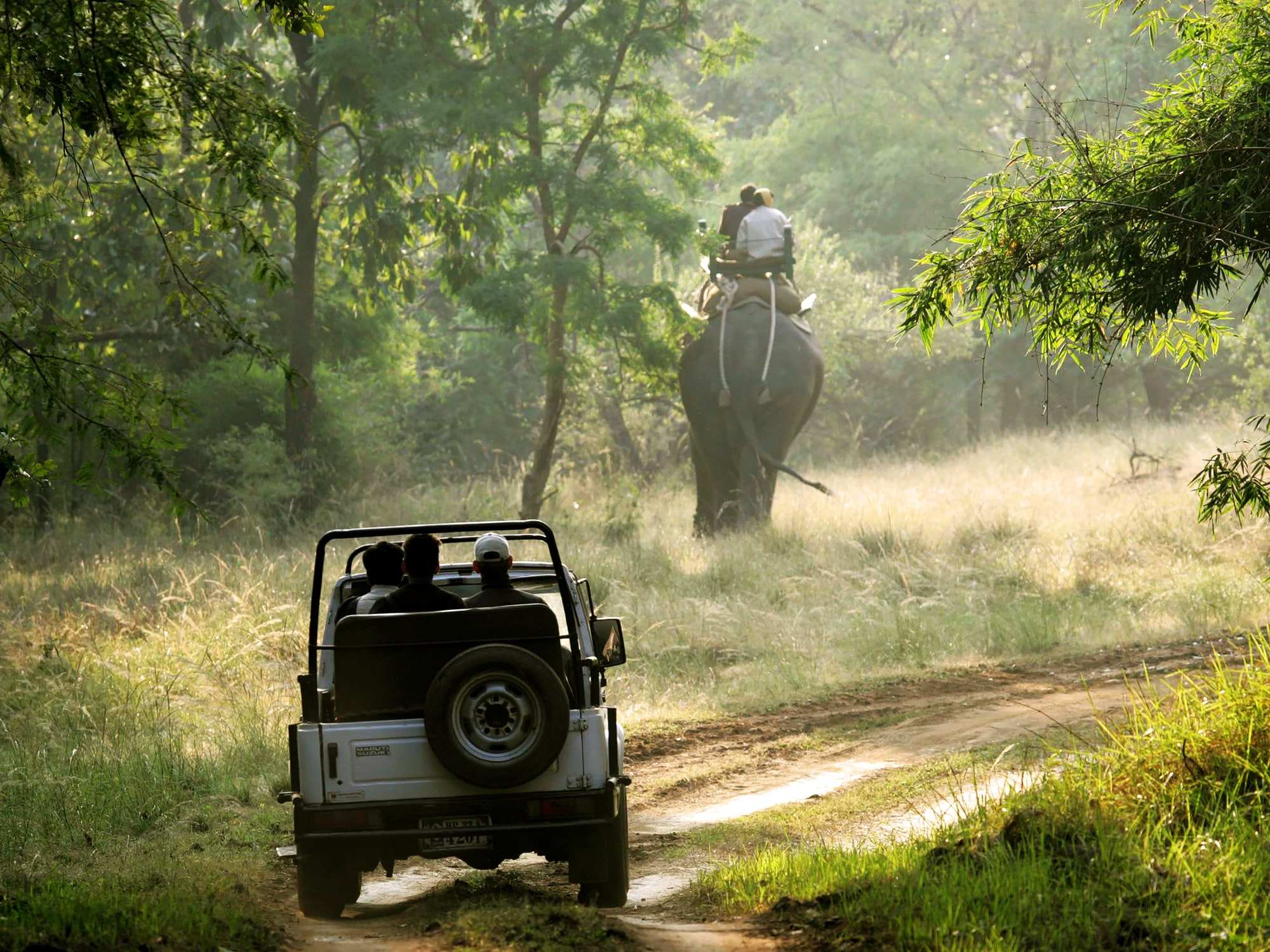
What is Safari?
Safari has been optimized to handle the load of millions of websites and apps. It was also rearchitected to deliver a more stable experience for everyone, including users on older devices. Safari is much faster than Jungle.
Safari has more in store for you than before, including an update to how it handles tabs and an overhauled home screen that makes the app feel more like a native app. It’s also got some nifty new features, like iCloud Tabs, Tab Mix Plus, and even iCloud Photo Library.
Safari Vs. The jungle is an innovative platform that helps young entrepreneurs launch their businesses on an affordable budget without compromising quality.
The company is in its very early stages. It has partnered with over 40 brands from different industries to provide its customers value-added services such as logo design, brochure design, e-commerce development, and more.
We’re looking for people who can help us build out our customer support team to continue growing our community. This could include helping customers solve problems, troubleshooting technical issues, responding to feedback and other support requests, or anything else you think of.
What is Jungle?
In a nutshell, Jungle is an online course created by Darren Rowse. It was launched in 2008 and had over 100,000 students enrolled.
Safari is an online course created by Darren Rowse and is a spin-off of Jungle . It launched in 2012 and has only around 3,000 students enrolled.
I’m a big fan of Jungle and recommend it to anyone looking to make money online .
So what are these things? For starters, you don’t need any special equipment to start selling on Amazon.
There are many different ways to market your products. Some of them require specialized tools, while others don’t. This is an important distinction to keep in mind.
Amazon is one of the more popular ways to market your products. It doesn’t cost anything to list your items.
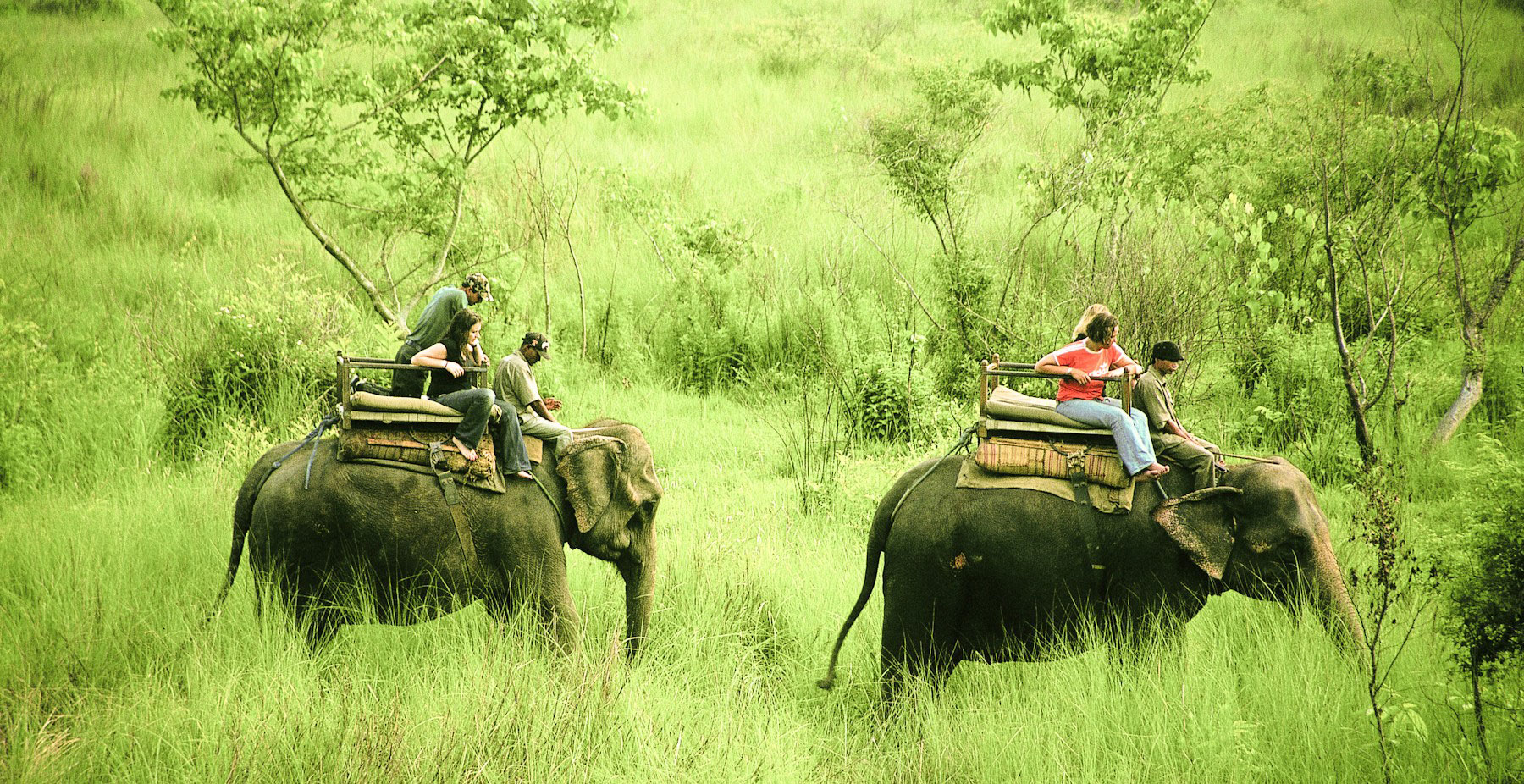
How to make a safari ad
The jungle is a place where you go to get food and water. It’s also a term used in soccer to describe the goal.
Safari is a term used by many to describe the internet. It’s also a type of jungle where you can go to get information.
I think it depends on the niche you’re in.
If you’re a B2B marketer, I’d suggest getting more in-depth into the SEO side of things and possibly looking at other types of content marketing .
How to make a jungle ad
What is the difference between jungle and safari ? They are two websites offering the same products but have very different designs.
Safari has a much cleaner look than jungle . It is easier to navigate and allows you to search for products quickly.
The jungle offers a more traditional look. It is not as organized as a safari, and the navigation can be complicated. But if you are looking for something more in-depth, the jungle may be just what you need .
When it comes to earning money online, one of the most important things to know is how to get traffic. There are a lot of different methods, but the best way is to use affiliate marketing .
I’m going to show you how to get started with affiliate marketing and how to make money fast.
In Conclusion, I’m sure you’ve learned a lot by now. So I hope you enjoyed this summary of my favorite five highest-paying work-from-home jobs without a degree.
I would love to hear what you think about this list in the comments below. Do you agree? Disagree? Have you tried any of these methods?
For even more help, check out this page with tons of information about the best work-from-home jobs without a degree.
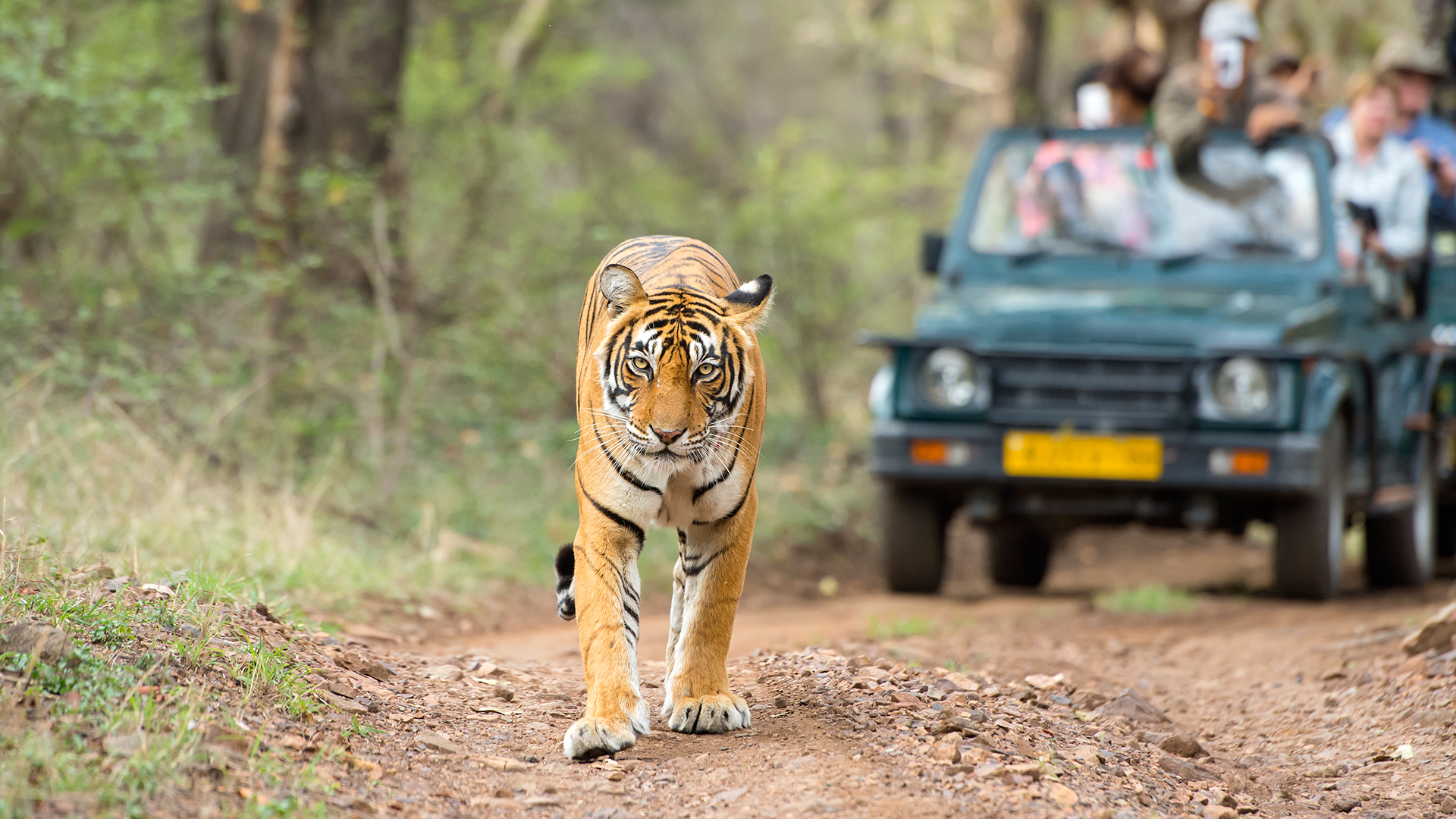
Frequently Asked Questions (FAQs)
Q: What is the biggest misconception about going to Safari vs. Jungle?
A: There are some misconceptions. Some people say they don’t want to go to Safari. They think it’s like the zoo or something like that. But it’s not like that at all. There’s so much more to it than what people think . There are animals to interact with and scenery to see; it’s really fun. You can get close to them and pet them; they’re so soft. It’s amazing.
Q: What do you enjoy the most about going to Safari vs. Jungle?
A: The best thing about going to Safari vs. Jungle is that you are going to a real place and interacting with the animals . You can pet them, and they’re so soft. It’s amazing.
What’s the difference between a safari and a jungle trip?
A: A safari trip is usually one or two nights in a hotel. We’ll go and see elephants, giraffes, rhinos and other animals . On a jungle trip, we stay in tents and are on a wildlife reserve. We go on nighttime game drives, seeing animals like lions, cheetahs, and leopards. Seeing them in their natural habitats is much more fun than in captivity.
Q: Do you like both types of trips?
A: Both safaris and jungles are great. We’re unsure if we will make another safari or jungle trip because we just booked our next trip.
Q: Which one is better for models?
A: Safari is better for models because they have many different clothing lines.
Q: What are your thoughts about being a model?
A: I am a very confident person. I believe in myself. I do what I think is right and follow my dreams. I am always myself when I go out.
Q: What’s the biggest misconception about being a model?
A: The biggest misconception about being a model is that you are not a real person. We are just dressed-up dolls walking around.
Myths About Jungle Safari
1. Safari is very boring
2. People don’t do things like they do in the jungle.
3. The food is always good, and everyone is well-fed.
There are many affiliate programs to choose from, and they are all different. Some are more lucrative than others, but most require work to get started.
For example, you may need to create a website and a social media page, or you may have to invest in a product that you intend to sell. Whatever it is, you’ll need to put in some effort to get started.
Before you start selling, you should consider whether you’re ready. Is there a market demand for your product? Is it something you can learn to do well? If you’re not sure about any of these things, you may not want to jump into the world of affiliate marketing just yet.
In Conclusion, I would like to point out that while the two have certain differences, the general concept behind them is the same.
If you’re serious about starting a website and becoming a successful entrepreneur, I recommend going the jungle route. There are many different options to choose from when monetizing your website.
Choosing the right one is important because once you start selling, you won’t be able to go back.
Curtis E. Kirschbaum
I’m currently a travel blogger full of passion, where I share the best tips and tricks to travel. I’m passionate about food and I’m always looking for ways to try new recipes. I love all kinds of music and I love to sing. I love to write and tell stories. I also really enjoy dancing and doing yoga. I love traveling! I’m always exploring and learning about new places.
Today Trending
Latest post.

Copyright © 2024 Justinstago. All Rights Reserved
Welcome Back!
Login to your account below
Create New Account!
Fill the forms bellow to register
Retrieve your password
Please enter your username or email address to reset your password.
Chitwan National Park: the Centre for Jungle Safari in Nepal

Chitwan National Park – in the Terai lowlands region of Nepal – is one of the top wildlife safari destinations in Asia and home to over 700 wildlife species. These include the extremely rare one-horned rhinos, clouded leopards and Bengal tigers. The subtropical forests and grassy plains cover an area of 952sqkm (367sqmi), contrasting sharply with rugged Himalayan landscapes. If you’re planning a trip to Nepal, it’s certainly worth fitting Chitwan National Park into your itinerary – enjoy our guide to give you a taste of what to expect.
You can spend two nights in a luxury lodge and enjoy a Jeep safari in Chitwan National Park as part of Culture Trip’s exclusive 11-day Nepal trip , led by our Local Insider.
A brief history of Chitwan National Park
Formerly a royal hunting ground, Chitwan National Park became Nepal’s first national park when it was established in 1973 to protect the area’s wildlife from poaching – particularly Bengal tigers and one-horned rhinos, whose populations had been diminished to critically low levels.
In 1984, the park was awarded Unesco World Heritage status and with hunting outlawed, the population of rhinos has more than doubled from around 300 in the 1980s to 694 in 2021 – while the population of Bengal tigers has grown from 40 in the 1980s to around 100 today.
Today, the park is an increasingly popular destination for travellers keen to venture beyond the mountainous regions of Nepal and experience a totally different side to the country, attracting an average of 180,000 annual visitors. The success of its ongoing conservation efforts has earned Chitwan a reputation as one of the best-preserved national parks in Asia – therefore, one of the most biodiverse places on the continent.

Animals to look out for in Chitwan National Park
Along with Kaziranga National Park in India, Chitwan is one of only two places in the world with a population of over 100 one-horned rhinos, which, alongside African white rhinos, are the largest of all rhino species. Bengal tigers – the biggest of all big cat species – are also a magnificent sight to behold, if you’re lucky enough to spot one, of course.
It’s not just rhinos and tigers that are worth visiting for, though. Chitwan is home to 68 species of mammals, 126 species of fish, 56 species of reptiles and amphibians and one of the highest concentrations of bird species in the world – over 344 in total, including Indian pittas, Bengal floricans, crested serpent eagles and emerald doves.
If you go on a boat safari on the Rapti River, keep an eye out for gharials – a critically endangered, fish-eating crocodile species, recognisable by its long, thin snout. On game drives, you may also see Asian elephants, gaurs and hyenas in the grasslands – along with sloth bears, wild boars and grey langur monkeys in the jungle. There have even been sightings of cloud leopards on several occasions in recent years – although the chances of encountering one are slim at best.

When to visit Chitwan National Park
October through to March offers the most comfortable conditions for wildlife viewing in Chitwan National Park, with minimal rainfall and daytime temperatures hovering around 25°C (77ºF) on average. January and February are particularly good months for spotting animals as villagers harvest the long grass, making sightings much easier.
April and May – while considerably hotter and slightly wetter – coincide with the end of the dry season and when animals congregate at waterholes, so your chances of spotting a rhino or a tiger are increased. Just be prepared for hot and humid temperatures, often exceeding 35°C (95ºF).
It’s best to avoid the monsoon season between June and September, as flooding is common and wildlife safaris are practically impossible.
Culture Trip’s 11-day Nepal trip departs several times throughout the year .

How to get to Chitwan National Park
By far the most convenient way to get to Chitwan National Park is by air. With domestic airlines – such as Yeti Air and Buddha Air – you can fly directly from Kathmandu or Pokhara to Bharatpur, which is 6.2mi (10km) outside of the park – and from here, take a taxi to your accommodation. Flights only take 25 minutes from Kathmandu and 20 minutes from Pokhara.
The much cheaper alternative is to travel by bus, which takes between five and seven hours from Kathmandu and a similar amount of time from Pokhara to the village of Sauraha, just outside the park. Tourist buses depart at 7am daily from Sorakhutte – near the Thamel district – in Kathmandu and from Pokhara’s main bus stop.
If you don’t mind spending more for extra comfort, Greenline Tours run a deluxe bus service to Meghauli (on the edge of Chitwan National Park) from Thamel in Kathmandu and lakeside in Pokhara – complete with free Wi-Fi and air conditioning on board, plus a buffet lunch en route. You can book tickets online in advance: check the website for prices at the time of your visit.
If you like to feel your hair stand on end, you could let the adrenaline flow on a white water rafting and wild camping adventure along the Seti River – starting in Damauli and ending up in Gaighat, around an hour’s drive from Chitwan National Park. It’s one of the highlights of Culture Trip’s specially curated 11-day Nepal adventure , led by our Local Insider.
Where to stay near Chitwan National Park
There are no resorts within the boundaries of Chitwan National Park, but there are plenty of options nearby – ranging between luxury lodges and traditional homestays. The main village on the edge of the park is Sauraha – where you’ll find a plentiful choice of accommodation, bars and restaurants and safari tour providers. Green Park Chitwan, Maruni Sanctuary Lodge and Hotel Jungle Crown are among the standout options worth considering.
Meghauli, just 24mi (40km) to the west of Sauraha, is home to a handful of premium retreats, including Barahi Jungle Lodge and Meghauli Serai – both of which have an on-site restaurant and spa, as well as offering a range of wildlife experiences, including Jeep, boat and walking safaris with experienced park rangers.

Heading elsewhere? Discover our guide to the best boutique hotels in Pokhara .

KEEN TO EXPLORE THE WORLD?
Connect with like-minded people on our premium trips curated by local insiders and with care for the world
Since you are here, we would like to share our vision for the future of travel - and the direction Culture Trip is moving in.
Culture Trip launched in 2011 with a simple yet passionate mission: to inspire people to go beyond their boundaries and experience what makes a place, its people and its culture special and meaningful — and this is still in our DNA today. We are proud that, for more than a decade, millions like you have trusted our award-winning recommendations by people who deeply understand what makes certain places and communities so special.
Increasingly we believe the world needs more meaningful, real-life connections between curious travellers keen to explore the world in a more responsible way. That is why we have intensively curated a collection of premium small-group trips as an invitation to meet and connect with new, like-minded people for once-in-a-lifetime experiences in three categories: Culture Trips, Rail Trips and Private Trips. Our Trips are suitable for both solo travelers, couples and friends who want to explore the world together.
Culture Trips are deeply immersive 5 to 16 days itineraries, that combine authentic local experiences, exciting activities and 4-5* accommodation to look forward to at the end of each day. Our Rail Trips are our most planet-friendly itineraries that invite you to take the scenic route, relax whilst getting under the skin of a destination. Our Private Trips are fully tailored itineraries, curated by our Travel Experts specifically for you, your friends or your family.
We know that many of you worry about the environmental impact of travel and are looking for ways of expanding horizons in ways that do minimal harm - and may even bring benefits. We are committed to go as far as possible in curating our trips with care for the planet. That is why all of our trips are flightless in destination, fully carbon offset - and we have ambitious plans to be net zero in the very near future.

Guides & Tips
The solo traveller's guide to nepal.

See & Do
Hiking nepal: everything you need to know.

Places to Stay
The best hotels to book in nepal for every traveller.

This Virtual Museum Allows Armchair Travellers to Explore Nepal

Aiming High: Meet the First Black African to Summit Everest

How To Spend 10 Days In Nepal's Terai Region

Bars & Cafes
Visit the world’s highest irish pub in namche bazaar, nepal.

How to Spend Two Weeks in Nepal

Health & Wellness
The everest marathon: running the world’s highest race.

The Best Bookshops in Kathmandu, Nepal

The Best Markets in Kathmandu, Nepal

Why is Kathmandu in the Midst of a Pollution Crisis?
- Post ID: 1002100392
- Sponsored? No
- View Payload

The Best Travel & Tourism Blog of India
India Tours
- International Tours
- Destination Wedding
- Medical Tourism

Plan Your trip
12 best national parks for jungle safari experience in india – love and conserve our wildlife.
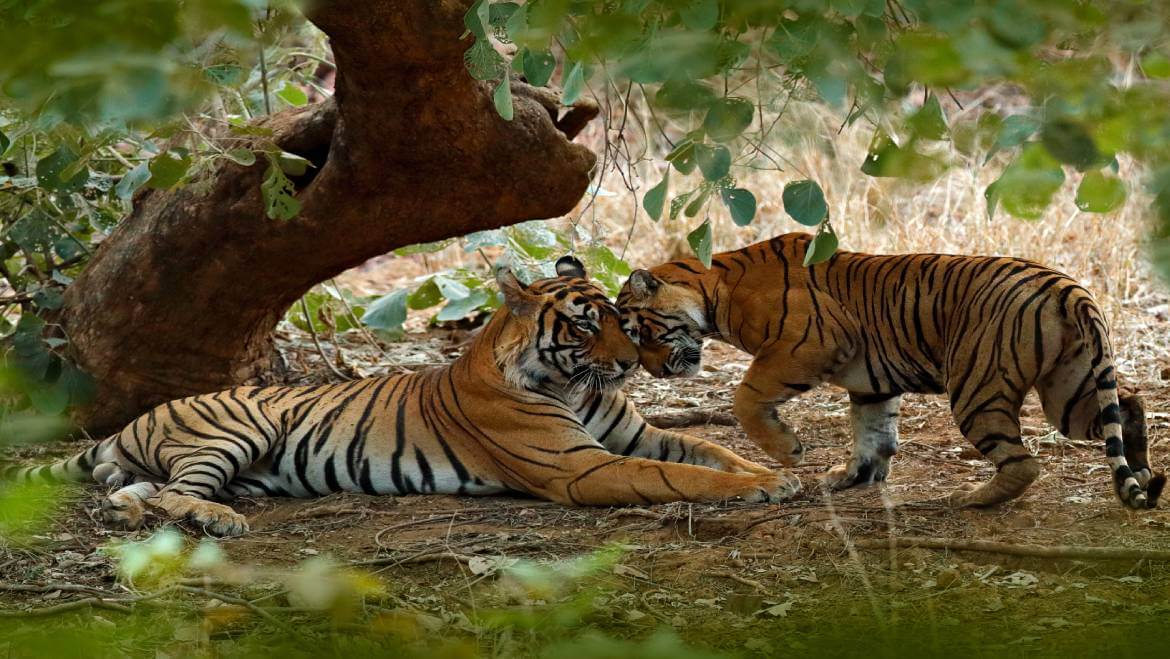
India has amazing National Parks and forest reserves for enjoying exciting wildlife safaris. The alluring and enchanting wilderness of India is very rich in floral and faunal species. Nobody can miss the powerful influence of nature from one’s life. One always needs an escape from the chaotic world of city life and elevates their spirit amidst the healing ambiance of nature. Nature plays an amazing role in inhaling and rejuvenating the spirit of mankind and the best vistas of nature can only be found where there is abundance of greenery.
India has an abundance of green forest reserves teeming with exotic wildlife. Tourists from all across the globe once in a while visit Forest reserves and national parks to enjoy amazing wildlife safaris. Not only it offers thrilling adventure activities but also it refreshes one’s mind, body and soul from tiredness.
Where are you going this year for your holidays? You can plan wonderful and thrilling Jungle safaris in India’s best National Parks and Tiger Reserves. Here is the list of top 12 best National Parks for Jungle Safari experience in India-
Also Check Out: Best All-Inclusive Wildlife Safari Tour Packages
Ranthambore National Park, Rajasthan
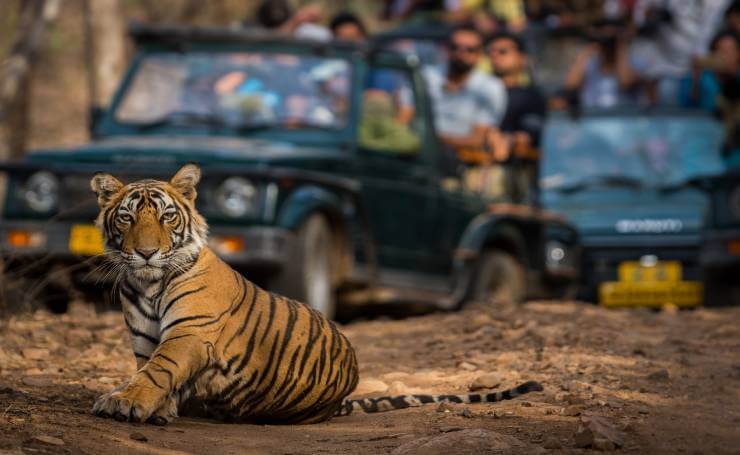
Ranthambore National Park offers one of the top jungle safaris in India. Here you will feel the heaven of refreshment all around, lush carpet of greenery, exotic wild animals creating an enchanting spell to seduce the mind of tourists.
Ranthambore National Park offers exciting opportunities for tiger sightings. The lofty Aravalli and Vindhya ranges in the background makes the park visually very appealing. Tourists and wildlife enthusiasts from all across the globe come here for an amazing wildlife experience. It is one of the best tiger Jungle safari destinations in India.
- Flora in Ranthambore National Park- Babul, Gurjan, Kadam, Khair, Khajur, Khakhera, Karel, Kikar, Mahua, Salar, Ronj, Tendu and Water Lilies etc.
- Fauna in Ranthambore National Park- Tiger, Sloth Bear, Leopard, Jackal, Fox, Hyena, Indian Wolf, Chital, Sambar Deer, Blue Bull Antelope or Nilgai, Rhesus Macaque and Langur etc
Best Time to Visit for Jungle Safari – October to June
Other Interesting Blogs to Read
- Best Places to Visit in Ranthambore
- Interesting Facts About Ranthambore National Park
- Ranthambore – Destination Wedding
- Hemis National Park
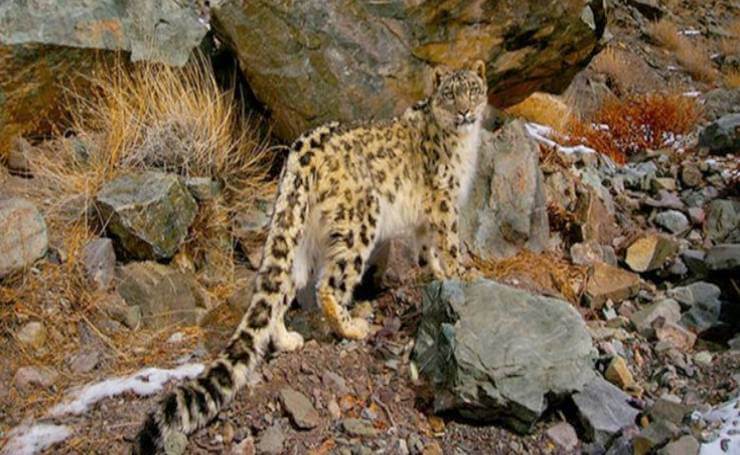
Hemis National Park is an enchanting wilderness to be healed and fine tune your spirit with the picturesque vistas of nature. Fresh tint of green trees, rivulets, wild calls of animals will definitely amaze your senses. You will completely forget yourself and embrace the wild heart of the jungle to sync with your inner soul’s adventurous nature. Here you will enjoy one of the most thrilling jungle safaris of India. There are around 70 mammal and 70 bird species in the park which will definitely blow your heart away with their wild calls and sweet chirpings.
- Flora in Hemis National Park – Anemone, Veronica, Delphinium, Gentiana, Lloydia and Kobresia etc.
- Fauna in Hemis National Park – Ladakh Urial, Tibetan Argali, Bharal, Tibetan Wild Ass and Dholes etc.
Best Time to Visit- May to October
Also Read: Wildlife Tourism in Leh Ladakh
Bandhavgarh National Park, Madhya Pradesh
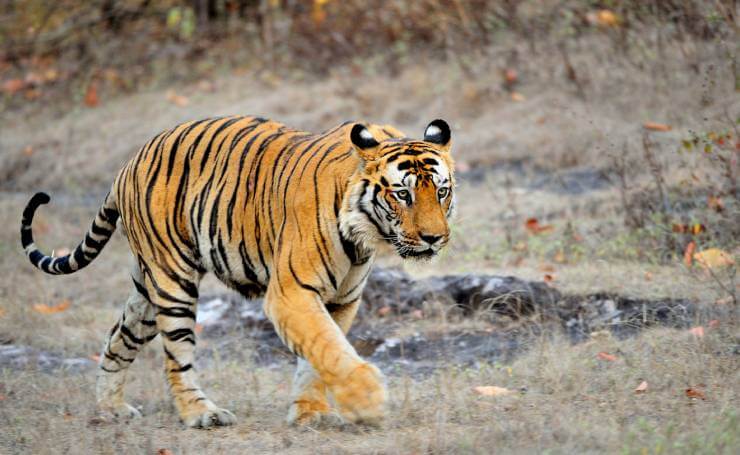
The beauty of Bandhavgarh National Park will never dull your moment and fail to rejuvenate your senses. There is nothing else in the universe that has the capacity to heal your spirit then the influence of nature. The exotic wild animals decorate this heavenly paradise with their calls and smiles.
Bandhavgarh National Park will show you enchanting vistas of Vindhya mountains and the exotic wildlife will seduce your soul with the best safari experiences in India.
- Flora in Bandhavgarh Park – Dhauda, Sal forests, Tendu, Arjun, Palas, Gamar, Salai, Saja, Bhirra, Khair, Kusum, Haldu, Dhaman, Ambla, Arjun, Kapok, Amaltas, Mahua and Kalasiris etc.
- Fauna in Bandhavgarh Park- Chital, Tiger, Sambar Deer, Wild Pig, Chausingha, Gaur, Wild Boar, Bengal Fox, Sloth Bear, Chinkara, Dhole and Asiatic Jackal etc.
Best Time to Visit – October to June
- Top Things to Do in Bandhavgarh
- Night Safari in Bandhavgarh
- Hot Air Balloon Safari in Bandhavgarh
Gir National Park, Gujarat
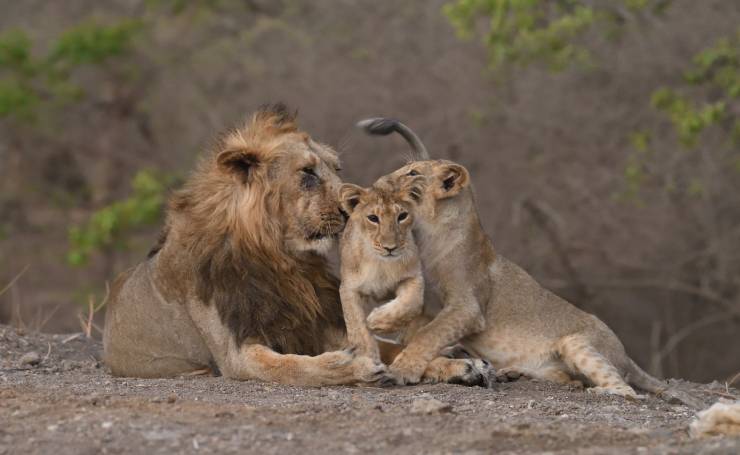
Picturesque landscape of Gir National Park is very famous for Asiatic Wild Lions. Coming here for an amazing wildlife safari will make you rejoice like a child. From photographers to nature lovers, the beauty and habitat of Gir National Park will leave an amazing impression in your mind for a long time. The habitat of Gir National Park is entirely dry and deciduous which is best for Asiatic Lions. You will not find this species of lion anywhere in India. One more place where this species is found is the jungles of Africa. There are around 40 species of reptiles and amphibians and 200 species of avifauna. Wildlife lovers from all across the globe come here for the best wildlife tourism experience of India.
- Flora in Gir National Park – Jambu, Karanj, Umro, Vad, Kalam, Charal, Sirus, Amli, Tendu, Dhak, Zizyphas and Jamun etc.
- Fauna in Gir National Park- Sambar deer, Chousingha, Jackal, India Fox, Hyena, Four-Horned Antelope and Asiatic Lions etc.
Best Time to Visit- November to March
Other Interesting Blog to Read
- Gir National Park- Meet Majestic Asiatic Lion
Kanha National Park, Madhya Pradesh
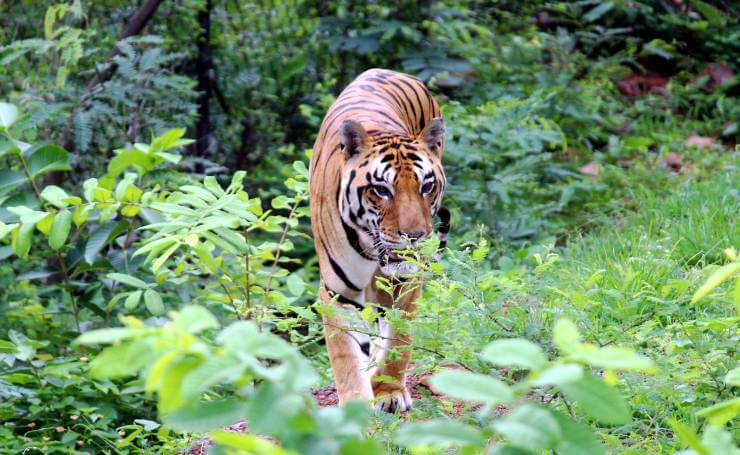
Listen to the music of nature, wild gaze of animals and soothing picturesque vistas will take you in the world of serenity and tranquillity. For a refreshing holiday experience, the wildlife Safari of Kanha National Park is one of the best jungle safari experiences in India. Match your heart beat with the rhythm of nature.
Kanha National Park is an enchanting wilderness for wildlife and nature lovers. It was used by famous novelist Rudyard Kipling as a background for his novel -Jungle Book. The verdant green vistas of the picturesque landscapes of this park will take your breath away.
- Flora in Kanha National Park- Sal, Saja, Lendia, Dhawa, Tendu, Palas, Bija, Mahua, Aonla, Achar and Bamboo.
- Fauna in Kanha National Park- Tiger, Leopard, Wild Dog, Sloth Bear, Foxes, Jackals, Panther, Chital, Sambhar, Black Buck, Barking Deer, Barahsingha and Gaur etc.
Best Time to Visit- October to June
- Top 10 Activities to Enjoy in and around Kanha National Park
- What is the Best Time to Visit Kanha National Park in Madhya Pradesh?
Kaziranga National Park, Assam
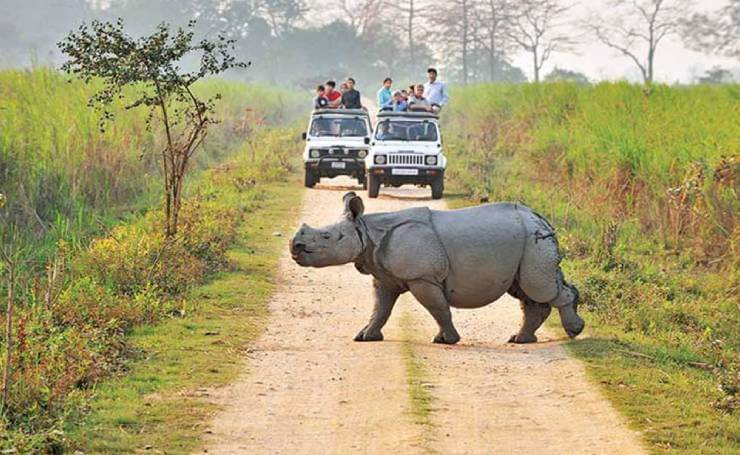
The enchanting world of wilderness in Kaziranga National Park , its Eden- like beauty, lush greenery- Stop and let it embrace your tired spirit with its healing touch and sing you a lullaby to rejuvenate your mind, body and soul. Spot amazing wild animals who roam freely will brace you up with vitality.
Kaziranga National Park Located in Nagao district of Assam is a UNESCO World Heritage Site. It is very popular for One- horned Rhino sightings which is one of the most endangered rhino species in the world. The Brahmaputra River at the fringes, stunning grasslands, beautiful meadows and breath-taking migratory birds attracts lots of wildlife lovers every year. It is one of the top jungle Safari destinations to visit in India for amazing wildlife adventures.
- Flora in Kaziranga Park – Albizia procera, Duabanga Grandiflora, Lagerstroemia Speciosa, Crateva Unilocularis, Sterculia Urens, Grewia Serrulata, Mallotus Philippensis etc.
- Fauna in Kaziranga Park – One-Horned Rhinoceros, Royal Bengal Tiger, Asian Elephant, Wild Water Buffalo and Swamp Deer etc.
Best Time to Visit- November to April
- Top Activities to Enjoy in and around Kaziranga National Park
- When is the Best Time to Visit Kaziranga National Park in Assam?
Satpura National Park, Madhya Pradesh
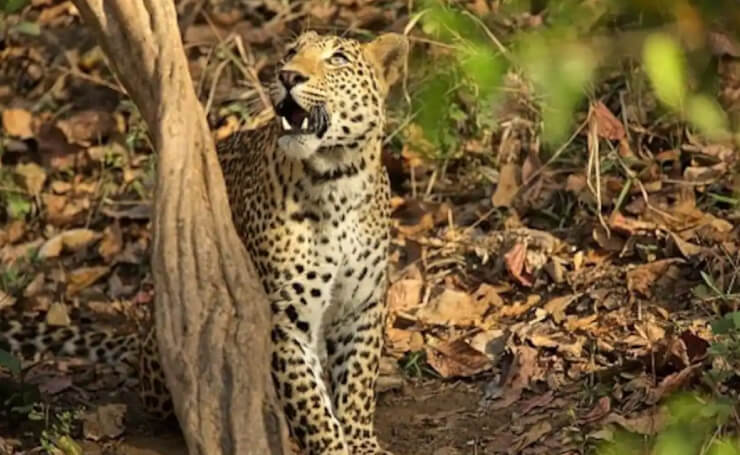
When you come to contemplate the beauty of Satpura National Park ; in its picturesque landscape you will find the richness in its quality of ambiance. Wild animals roam freely here and will gaze at you with excitement and the thrill of Jungle Safari at every moment here will never make you feel dull for a moment.
Located in the south of river Narmada, the stunning ranges of Pachmarhi plateau, dense teak forests, exotic animals from Nilgiri areas will captivate your heart. It offers one of the best Jungle Safaris in India.
- Flora in Satpura National Park- Sal, Teak, Tendu, Phyllanthus Emblica, Mahua, Bel, Bamboo, and Grasses etc.
- Fauna in Satpura National Park- Giant Squirrel, Indian Skimmer, Black Bellied Tern, Leaf-nosed Bat, leopard, sloth Bear, tigers, Wild boar, Wild Dog and Black Buck etc.
- Best Places to Explore in Madhya Pradesh
Pench National Park, Madhya Pradesh
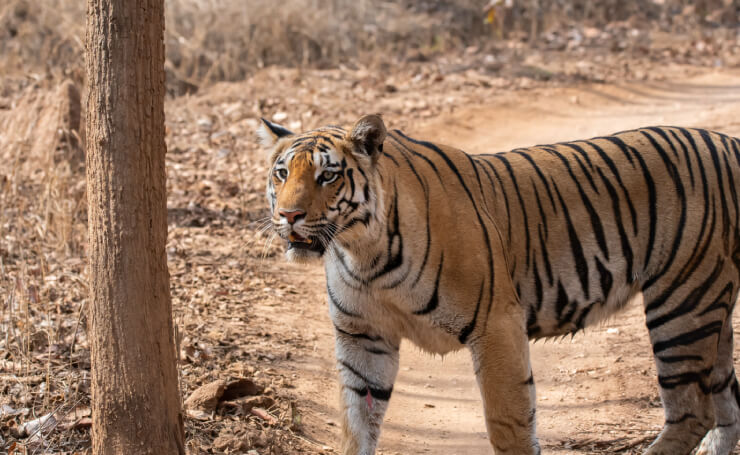
Visiting Pench National Park is like a doorway to a new world full of enchantment and thrill. It is one of the best National Parks for an amazing Wildlife Safari experience in India. Exotic wild creatures with their wild calls makes the entire habitat alive which gives thrill to the spirit in abundance.
Pench National Park is a treasure trove of amazing exotic wildlife species and floral species. Come here to admire the greenery all around and listen to the wild calls of animals to understand them better.
- Flora in Pench National Park- Moyan, Mahua, Mokha, Skiras, Tendu, Bija, achar, Garari, Aonla, Ghont, Baranga, Aonla,Khair, Bhirra, Palas, Skiras and Khamali etc.
- Fauna in Pench National Park- Sloth Bear, Chousingha, Chinkara, Barking Deer, Jackal, Fox, Palm Civet, Small Indian Civet, Jungle Cat and Hyena etc.
Best Time to Visit- October to February
Also Read: Wildlife of Madhya Pradesh
Periyar National Park & Wildlife Sanctuary, Kerala
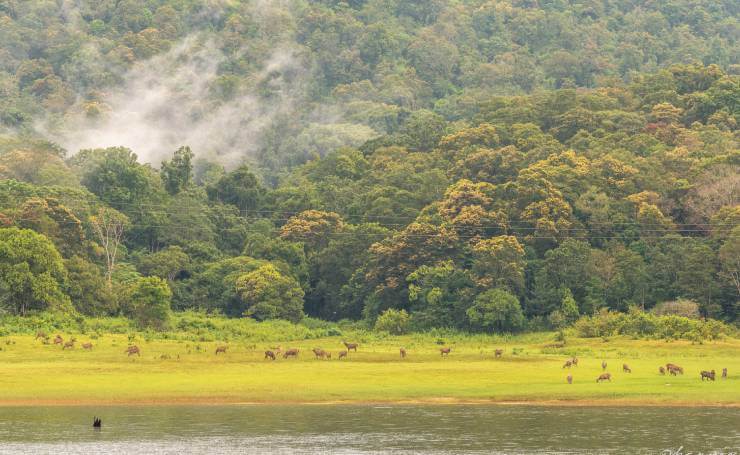
Your Holidays will make you feel a lot better when you add thrill and excitement to it. What’s a better way than spending it in Periyar wildlife Sanctuary? It’s wonderful wildlife experience will make your holidays in India awesome.
Periyar Wildlife Sanctuary is one of the best national parks for tiger jungle safaris in India. Located in Kerala, the beauty of this park will mesmerise your soul. You will witness alluring sights of wild elephants, deers and delightful birds. The natural vistas and soothing ambiance of calm nature will refresh your mind.
- Flora in Periyar National Park- Teak, Rosewood, Tamarind, Mango, Jamun, Pipal, Gulmohar, Plumeria, Banyan, Sandalwood and Eucalyptus etc.
- Fauna in Periyar National Park – Leopard, Sambar Deer, Indian Bison, Indian Wild Dog, Asian Elephant, and Barking Deer, Long-Tailed Macaque, Bonnet Macaque, and Nilgiri Langur etc
- Birds in Periyar National Park- Malabar grey hornbill, Indian Pied Hornbill, White-Bellied Treepie and Malabar Trogon etc
Also Read: Wildlife of Kerala
Sundarbans National Park, West Bengal
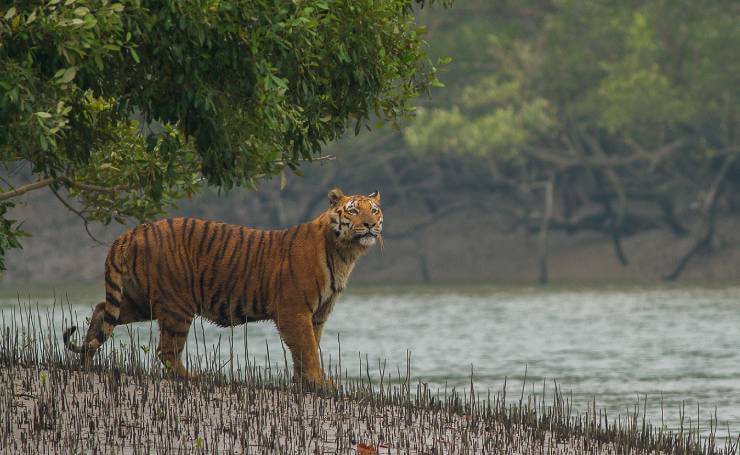
One must visit Sundarbans National Park once in a lifetime. It is a UNESCO world Heritage Site. Its awe-inspiring landscape will evoke the artist in you. Nature and the wild is a journey here to the most perfect kind of refreshment which you will not be able to get anywhere else.
It is the largest mangrove forest in the world which covers an area of 10, 00 sq. km. Various creeks and tributaries offer delightful wildlife sightings and nature vistas. It is one of the most popular wildlife destinations to visit in India. Wildlife lovers come here for awesome Royal Bengal Sightings and it also houses around 260 species of birds which makes it a best bird watching paradise in India.
- Flora in Sunderban- Sundari Tree, Goran, Keora, Gewa, Dhundul, Kankra, Khagra and Spear Grass etc.
- Fauna in Sunderban- Royal Bengal Tiger, Wild Boars, Fishing Cats, Macaques, Common Grey Mongooses, Foxes, Jungle Cats, Flying Foxes, Pangolins, and Spotted Deer etc.
Best Time to Visit- October to March
- Best Places to Explore & Top Things to Do in Sundarban National Park
Tadoba Andhari National Park, Maharashtra
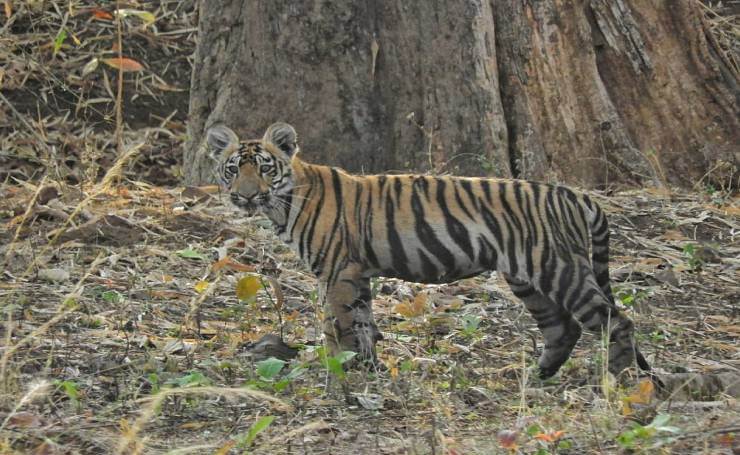
Tadoba Andhari National Park’s landscapes will give you surprises each moment. It will enchant you with its amazing floral and faunal species. Sometimes decked in simplicity, sometimes with the vitality of the wild nature changes here every moment. It is one of the best places to enjoy Wildlife Safari.
Being the largest national parks for tiger sightings in Maharashtra it is very popular among wildlife lovers. The deep valleys and dense forests of the park are quite a scenic sight to behold for nature photography. Indeed, one must visit here for thrilling Jungle Safaris in India.
- Flora in Tadoba Park- Teak, Bamboo, Hald, Salai, Semal, Beheda, Hirda, Karaya Gum, Mahua Madhuca, Lannea and Tendu
- Fauna in Tadoba Park- Roya lBengal Tigers , Sloth Bears, Leopards, Gaurs, Nilgais, Civets, Striped Hyenas, Sambars, Barking Deers, Chitals and Wild Dogs etc.
- Best Time to Visit Tadoba Tiger Reserve
- Best Hotels & Resorts to Stay in Tadoba National Park
Jim Corbett National Park, Uttarakhand
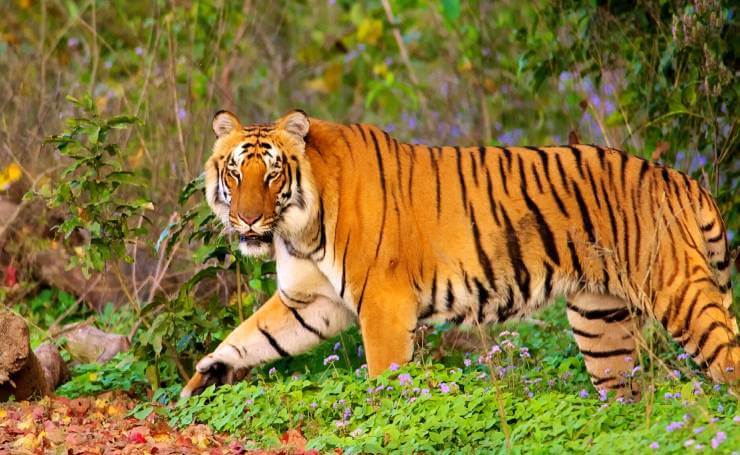
Come here and get lost in its picturesque landscapes, refreshing vibes and soothing ambiance forever. Jim Corbett National Park is one of the most popular National Parks of India for tiger jungle safari. It is a place where the first tiger project was launched in 1973. The boundless sides of the forests will reveal amazing floral and wildlife species which will make your soul blossom with thrill and joy.
Eye captivating grasslands, soulful migratory birds, alluring hills and stunning ravine belts offers mind boggling experience of wildlife holidays to the tourists.
- Flora in Corbett Park- Trees, Shrubs, Narkul, Tiger Grass, Herbs, Bamboos, Grasses, Climbers, Bel, Kusum, Mahua, Bakli, Amla, Dhak, White Flowers, Big Red Blooms and Ferns etc.
- Fauna in Corbett Park- Royal Bengal Tiger, Asiatic Elephant, Hog Deer, Walking Deer, Sambar, Sloth Beer, Yellow-throated marten, Otters and Asiatic Black Bear etc.
Best Time to Visit- October to Mid-June
Visiting all these enchanting National Parks is in itself a mind-boggling experience for a lifetime. Why are you still waiting for a perfect time? Now that you have the best list, Plan an amazing wildlife vacation in India.
Other Important Wildlife Tourism Links
- Famous National Parks of India
- Popular Bird Sanctuaries in India
- Top Places for Snow Leopard Sighting in India
Like & Follow our social media accounts at Twitter , Facebook , Linkedin & Instagram for getting the latest updates & offers on holiday packages .
Disclaimer: We do not take credit for some of the licenced paid images used in our blogs, whether from Google Images, Fotolia & Shutterstock. All such images are the copyrights of their respective owners and we try to provide credit for them wherever we can. If, however, any copyright image has been used on our blog, the concerned person can either mail us directly to remove the image or provide credit to whomsoever the image may belong to.
Frequently Asked Questions
Which are the top jungle safaris destinations in north india.
Top Jungle Safari destinations in North India are –
- Ranthambore National Park
- Jim Corbett National Park
- Dachigam National Park
- Dudhwa National Park
- Great Himalayan National Park
- Rajaji National Park
- Sariska National Park
- Kishtwar National Park
- Salim Ali National Park
Which are the best jungle safaris destinations in South India?
Best jungle safaris destinations in South India are-
- Bandipur National Park
- Periyar National Park
- Mudumalai National Park
- Dandeli Wildlife Sanctuary
- Nagarhole National Park
- Bannerghatta National Park
- R Hills Wildlife Sanctuary
- Kudremukh National Park
- Eravikulam National Park
- Guindy National Park
- Silent Valley National Park
- Mukurthi National Park
- Sri Venkateshwara National Park
Which are the best jungle safari places in Gujarat?
Best Jungle Safari Places in Gujarat are-
- Marine National Park
- Narayan Sarovar Sanctuary
- Gaga Wildlife Sanctuary
- Mitiyala Wildlife Sanctuary
- Pania Wildlife Sanctuary
- Purna Wildlife Sanctuary
- Wild Ass Sanctuary
- Nal Sarovar Birds Sanctuary
- Jessore Sloth Bear Sanctuary
- Barda Wildlife Sanctuary
- Rampara Wildlife Sanctuary
- Shoolpaneshwar Wildlife Sanctuary
- Balaram Ambaji Wildlife Sanctuary
- Jambughoda Wildlife Sanctuary
- Barda Hills Wildlife Sanctuary
Which are the best national parks in India to explore Lions, Tigers, Leopards & Bears?
The best national parks in India to explore Lions, Tigers, Leopards & Bears are –
- Bandhavgarh National Park
- Gir National Park (For Lions)
- Tadoba Andhari Tiger Reserve
- Karakoram Wildlife Sanctuary
- Panna Tiger Reserve
- Jhalana Leopard Safari Park
- Kanha Tiger Reserve
- Sundarbans National Park
- The Great Himalayan National Park
- Dandeli wildlife Sanctuary
- Pench National Park
Which is the best time to plan jungle safari holidays in India?
The best time to plan an awesome Jungle Safari in India between the months of October to Mid-June. If you want to explore nature and wildlife in amazing weather then plan your visit in Winter months but if you really want to catch the sight of wild tigers then summer time is the best for this. During summer Tigers and other wild creatures come near water bodies to quench their thirst and you can click their pictures at that time.
Published: 23 Apr, 2022
About the author

Pallavi Roy
She is a candle who burns and melts in the chaos of infinity, from where her visceral whistles and leaves an imprint of desire in her heart to know the map of an Island where there are different sunrises and sunsets. Her curiosity brightens to conquer the hearts unrelieved and sometimes mysterious. Her name is - Pallavi Roy - A traveller by soul and a writer by Profession.
Recent Trending Posts
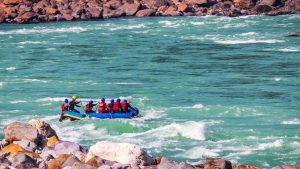
April 5,2024
7 Best Places to Spend Your Summer Break in North India

April 1,2024
Now an Intangible Cultural Heritage Under UNESCO, Gujarat’s Garba Shares the Global Stage
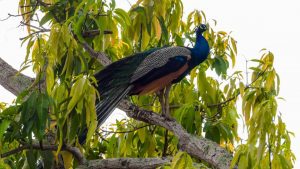
March 27,2024
10 Best Bird Watching Destinations in India
- Hill Stations
- Travel Deals
- Amazing Facts
- Travel Experience
- Travel Tips
- Travel Alerts
- Travel Videos
- Edu-Tourism
- Inspirational People
Popular Posts

May 30,2014
20 Highway Dhabas that You Must Stop By

February 12,2014
Top 15 Places for Honeymoon in North East India

September 6,2014
12 Best Beaches in Maharashtra

October 31,2013
Top 15 Wildlife Sanctuaries and National Parks in Kerala
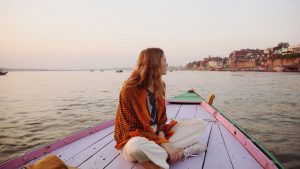
August 27,2014
Best 15 Destinations in India for Solo Women Travellers
International posts.

November 8,2023
10 Best Beaches in Thailand

November 3,2023
Tourism Update – Enjoy Visa Free Holiday Travel in Sri Lanka

Thailand Tourism Update- Indian Travelers Now Get a Visa-Free Entry to Thailand!
Explore best places to visit in india by month.

Best Places in January

Best Places in February

Best Places in March

Best Places in April

Best Places in May

Best Places in June

Best Places in July

Best Places in August

Best Places in September

Best Places in October

Best Places in November

Best Places in December
India tourism important information resources, north india.
- Uttarakhand
- Jammu & Kashmir
South India
- Pondicherry
- Andhra Pradesh
- Mahararashtra
- Dadra Nagar Haveli
- Daman & Diu
Luxury Trains
- Maharaja Express
- Palaces on Wheels
- The Golden Chariot
- The Deccan Odyssey
- Majestic Tourist Train
Quick Links
- Kumbh Mela Haridwar 2021
- MICE Tourism
With eyes on China, US special operators are back to battling the jungle
- US special operators are shifting focus to jungle warfare as the potential for conflict with China grows.
- Marine Raiders recently completed a jungle warfare course in Hawaii showing the requirements of jungle operations.
- Decades of desert ops have dulled jungle warfare skills, requiring more specialized training in this environment.

After spending more than 20 years fighting in the wars in the Middle East, US special operators are pivoting to other environments. With the potential for a conflict with China in the Indo-Pacific looming ever larger in the background, the US special operations community is focusing more and more on jungle operations.
A relatively recent exercise involving Marine Raiders highlighted the challenges and unique requirements of jungle warfare.
From the desert to the jungle
Last summer, a small team of Marine Raiders completed a jungle warfare course that addresses the challenges US forces might encounter in an Indo-Pacific conflict.
Taught by special operations and law enforcement veterans at the Tactical Tracking Operations School , the course began in 2015 but really took off in 2021. The two-week course takes place on the island of Oahu, Hawaii, and is designed to take small special operations teams and teach them the necessary skills to survive and thrive in jungle operations.
The Marine Raiders trained in jungle mobility skills, such as navigating thick brush, scaling and rappelling cliffs, and traversing rivers, counter Improvised Explosive Device (IED) techniques, reaction to contact, and ambushes. Throughout the course, the special operators either tracked an adversary or prevented them from tracking the team.
"Looking at the Pacific and deployments in that region, learning these skills is essential," a Marine Raider said in a press release . "For so long we trained for desert environments and now we have to look at where we could be needed next, and the jungle is top of that list."
The course ends with a final exercise that lasts up to three days and tests all the skillsets taught. After a simulated ambush, the students must regroup and hunt down the adversary using their tracking skills.
Related stories
Two decades of counterterrorism and counterinsurgency operations in Iraq, Afghanistan, and Syria largely dulled the jungle warfare capabilities of many units. Jungle warfare presents a whole different level of difficulty and requires specialized training to operate effectively.
"These same problems that we have now: low visibility, difficulty for intelligence, surveillance and reconnaissance platforms, broken communications, and logistical issues, they all existed for troops during WWII and Vietnam," Cody Carroll, the vice president of the school, said. "We didn't need to reinvent the wheel, just build the skills that we stopped training because we spent 20 years in the desert."
For example, movement in the jungle is much more restricted and visibility is often limited to just a few yards. Moreover, there are many small and large animals that can ruin someone's day, necessitating the right survival training. Tracking is another important part of jungle operations. With so much foliage, it's easy for an untrained unit to leave evidence of its direction in the jungle.
"I've been through this training with two teams now and both experiences were beneficial to everyone on the team," a Critical Skills Operator, or CSO, said. "I really think every company that can deploy to a jungle environment should come do this training. It's invaluable."
A history of jungle operations
US commandos have a long history of conducting jungle operations.
During World War II, US special operations units like the Alamo Scouts and the Marine Raiders fought the Japanese in the jungles of southeast Asia and the Pacific.
Then, during the Vietnam War, special operators serving in the secretive Military Assistance Command Vietnam-Studies and Observations Group (MACV-SOG) fought a classified war against the North Vietnamese and Vietcong in Laos and Cambodia.
Although the White House had assured the American public that no US troops were on the ground in the two countries that border Vietnam, the Pentagon understood that to stem the flow of weapons and insurgents in South Vietnam, it had to fight the enemy where it hurt.
Small teams of Green Berets, Navy SEALs, Force Recon Marines, and Air Commandos conducted some of the most impressive missions in US special operations history.
Today, as the US attempts to redirect its focus to the Indo-Pacific amid steadily rising tensions between the US and China, it looks like jungle operations are back on the menu for the US special operations community.
Watch: As the US prepares for potential conflict with China, this is how the Army is training for jungle warfare
- Main content

IMAGES
VIDEO
COMMENTS
Bwindi Impenetrable Forest National Park Steep mountain rain forest with wide altitude span offering the ultimate jungle safari with the chance of coming face to face with a gorilla. Kibale Forest National Park is made up of lush tropical rain forest in an area of outstanding natural beauty and habituated chimpanzee families to enliven your ...
Elephants are a favorite of all safari-goers and can be found on just about any safari. However, if you're in search of big elephant populations, your best bet would be Botswana. Okavango Delta (Moremi, Chobe, Savuti, Khwai, and Linyanti), Botswana. Chobe National Park, Botswana. Masai Mara National Reserve, Kenya.
We share the best safari destinations in the world. Travel on: a safari tour. 1. Okavango Delta, Botswana. Head to northern Botswana for one of the world's largest inland river deltas, the Okavango Delta. The wildlife encounters visitors will experience here are remarkable. Amid the grassy plains, the cry of hyenas, the roar of lions, the ...
Tayyaba delves into the intricacies of language, distinguishing between commonly confused words and phrases, thereby providing clarity for readers worldwide. A safari is an expedition to observe or hunt wildlife in their natural habitat, primarily in Africa, whereas a jungle refers to a dense, wild forest in tropical regions, rich in biodiversity.
Visitors who don't want to sacrifice creature comforts while on safari will appreciate &Beyond's offerings. During the tour operator's 10-day Kings of the Jungle safari - which starts at $11,340 ...
The word "Africa" is an evocative one that usually goes hand-in-hand with mental images of vast savanna plains dotted with exotic game. The majority of overseas visitors to Africa will go on safari and, in doing so, discover that there is nothing more magical than a close encounter with the continent's incredible wildlife. Most of the species one sees on safari are unique to Africa, and many ...
Jungle and Rainforest Safaris. The planet's most spectacularly fecund greenbelt jungles, are home to an extraordinary wealth of flora that supports some of the most eye-popping fauna of every shape, shade and size imaginable. Take your pick of a variety of jungle holidays, from driving through the undulating wilds of India in search of tigers ...
10 Best Jungle Safaris 2024/2025 - TourRadar. Searching for the best jungle safari in the world? From India to Nepal, Sri Lanka and Thailand, check out our list of the top places to see animals in the wild.
Conclusion. Jungle safaris offer a unique opportunity to connect with nature and witness the world's most incredible wildlife and landscapes. From the majestic lions of Africa to the enchanting rainforests of South America and the rare mountain gorillas in Uganda, these popular jungle safaris promise unforgettable adventures.
Butterfly Jungle Safari. All Ages; $15 per person; Visit Butterfly Jungle in an all new way! Learn about the butterfly life cycle on your way into the Hidden Jungle aviary, then become immersed in the wonder of colorful, fluttering butterflies. READ MORE. Wildlife Safari.
At The Jungle Book Safari And Tours, we are passionate about sharing our knowledge and experiences with fellow nature enthusiasts. With over a decade of expertise, we've led countless jungle safari, birdwatching tours, ornithological expeditions, and thrilling treks across the majestic mountains of Nepal. View Detail.
The African jungle is one of the world's most incredible environments. Congo Basin is the World's Second-Largest Tropical Rainforest, it is magnificent ecosy...
A jungle safari in Nepal is an unforgettable experience that offers a unique opportunity to explore the country's diverse landscapes and encounter its rich wildlife. By following this comprehensive guide, you'll be well-prepared for your safari adventure and ready to create lasting memories in Nepal's pristine wilderness.
There are very few experiences that compare to the adventure of an African Safari. Enjoy this 4k Scenic Wildlife film to witness the magic of a Safari in Afr...
4. Minimize Plastic Waste. In a sustainable safari, minimizing plastic waste is essential to protecting the jungle's pristine environment. Take reusable water bottles and avoid single-use plastic items like straws and bags. Choose eco-friendly toiletries and personal care products with biodegradable packaging.
The main downside is that Safari is not open source. However, it can be easily downloaded from the Apple website for free. The jungle is an online browser that works on Mac and Windows. It is also very user-friendly and has lots of useful features. The main downside is that Jungle is not open source. The Jungle Book is the best Disney movie ...
Safari is a Swahili word that means "journey" and is commonly used to refer to a trip or expedition, usually in Africa, to observe or hunt wild animals. Jungle, on the other hand, is a dense forest typically found in tropical regions, characterized by thick vegetation and a variety of wildlife.
Safari World Bangkok offers two buffet restaurants for visitors, namely Jungle Cruise and Safari, both serving a range of Thai and international delicacies. While both restaurants offer delectable food, Jungle Cruise is comparatively more spacious than Safari, with a seating capacity of up to 1700 guests.
Joel Rabinowitz 25 July 2022. Chitwan National Park - in the Terai lowlands region of Nepal - is one of the top wildlife safari destinations in Asia and home to over 700 wildlife species. These include the extremely rare one-horned rhinos, clouded leopards and Bengal tigers. The subtropical forests and grassy plains cover an area of 952sqkm ...
As nouns the difference between safari and jungle is that safari is a trip into any undeveloped area to see, photograph or hunt wild animals in their own environment while jungle is a large, undeveloped, humid forest, especially in a tropical region, that is home to many wild plants and animals. As a verb safari is to take part in a safari.
For a refreshing holiday experience, the wildlife Safari of Kanha National Park is one of the best jungle safari experiences in India. Match your heart beat with the rhythm of nature. Kanha National Park is an enchanting wilderness for wildlife and nature lovers. It was used by famous novelist Rudyard Kipling as a background for his novel ...
From the desert to the jungle. Last summer, a small team of Marine Raiders completed a jungle warfare course that addresses the challenges US forces might encounter in an Indo-Pacific conflict ...